Please, All images are copyrighted by Jim Edwards and may not be reproduced in any form including the copying or saving of digital files without written permission or a contract from Jim Edwards Wildlife Photography.
Contact e-mail: edwards617@aol.com
Namibia
2016
A country with the oldest, and second largest, desert in the world, the Namib.
A country that is almost twice the size of California
with a population of just 2.4 million people.
Namibia has animals that are specially
adapted to survive in desert conditions, like the Oryx.
Two bull elephants drinking from a small waterhole.
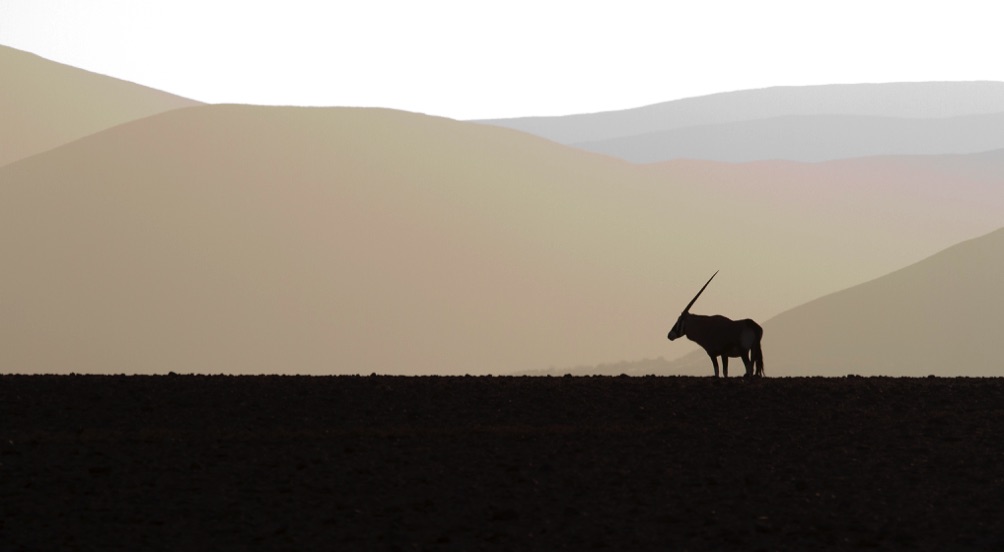
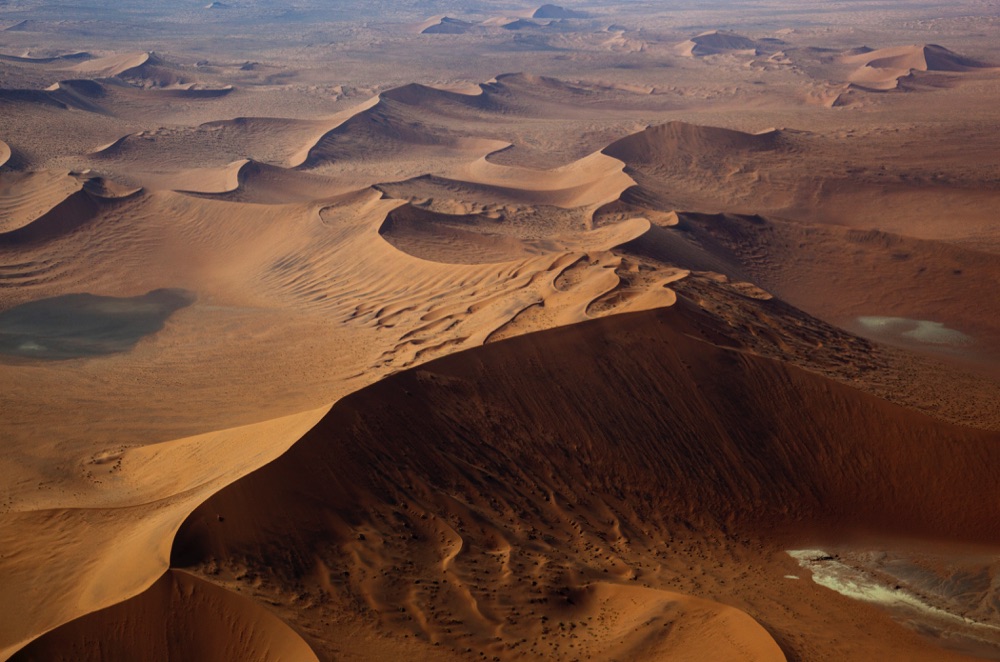
Water is scarse in the desert and the rare waterholes are good places to find wildlife. Of course, the predators know this too.
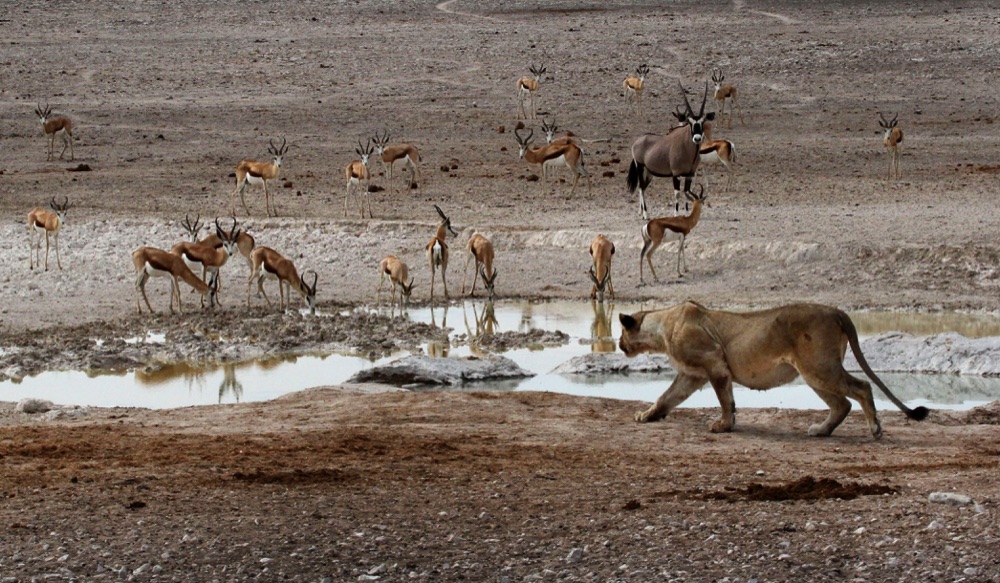
Estosha National Park is 8900 square miles in size, about the size of the state of New Hampshire. There are 114 mammal species, and more than 340 bird species have been counted in Etosha.
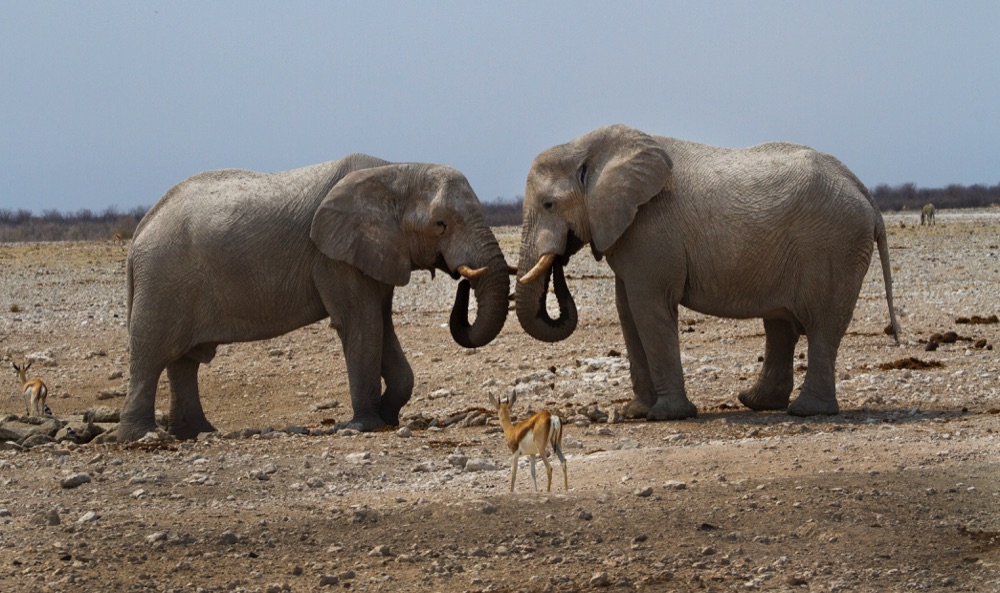
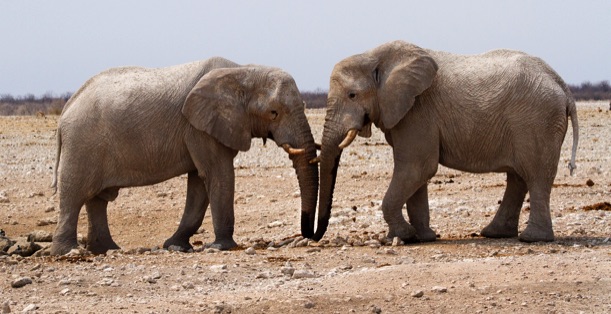
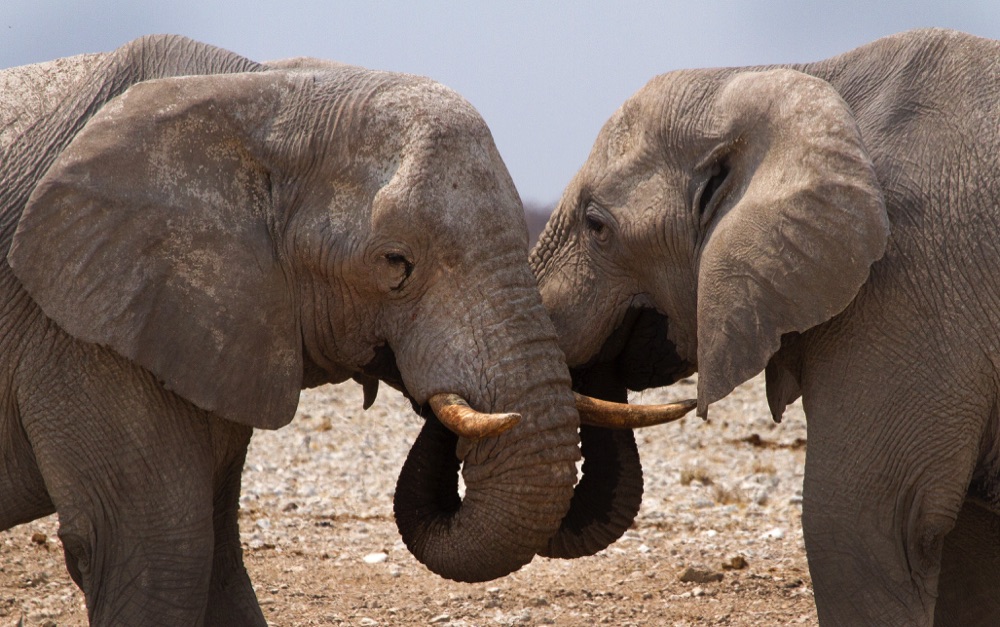
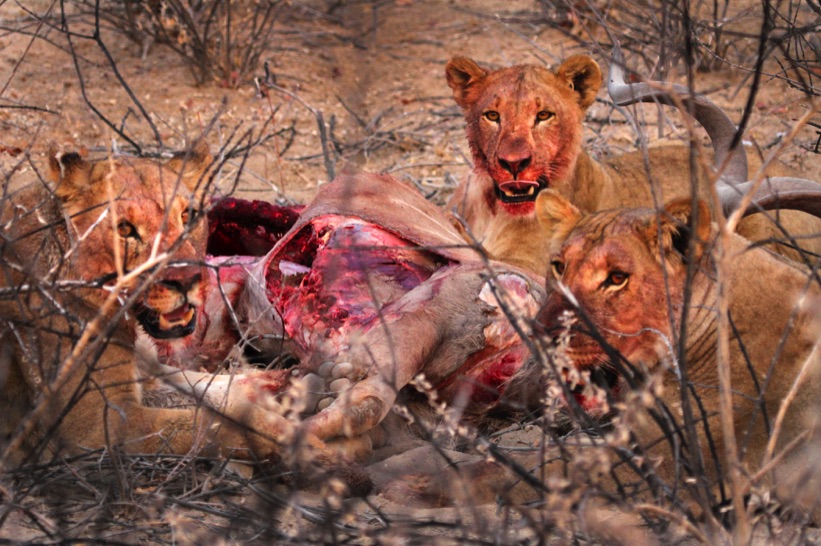
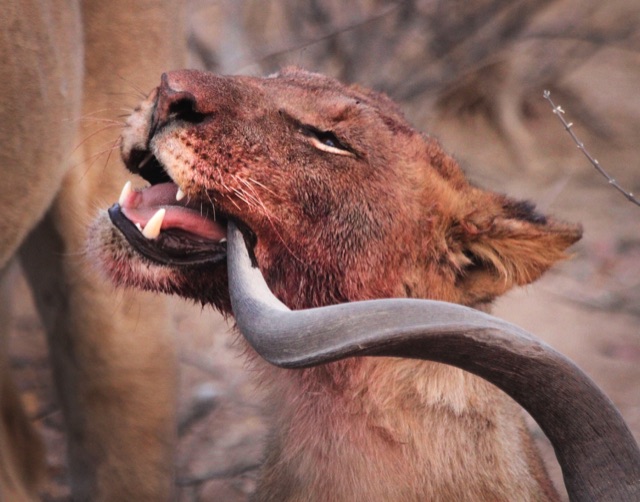
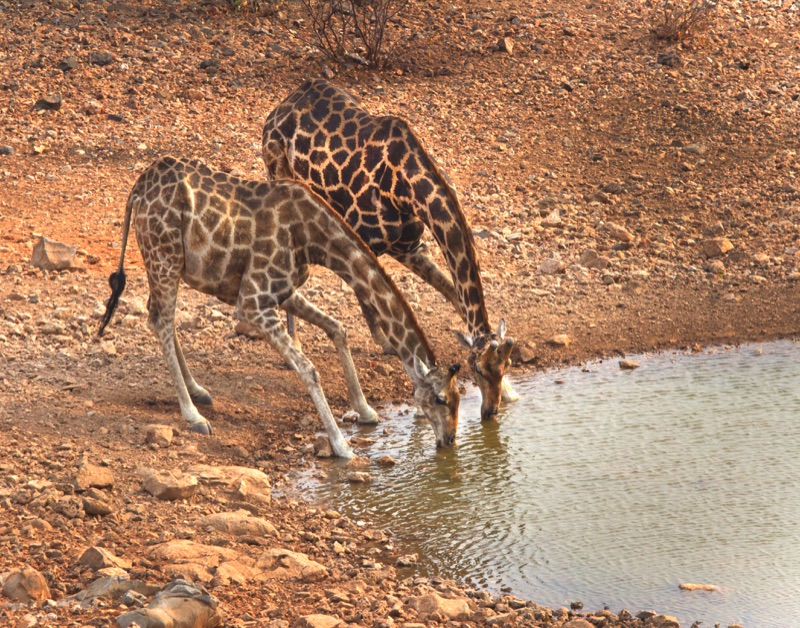
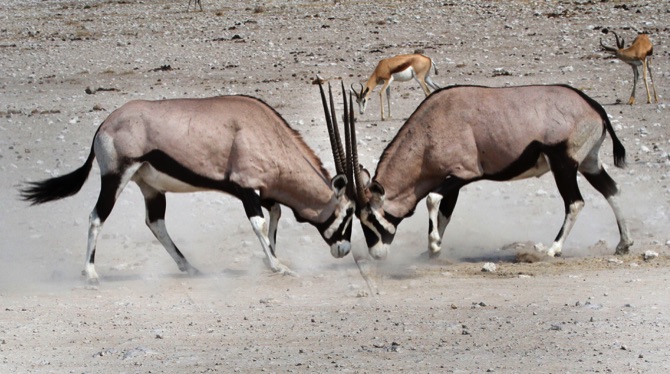
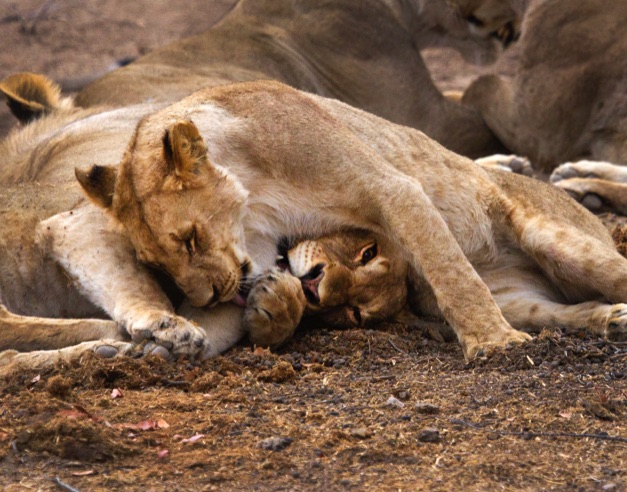
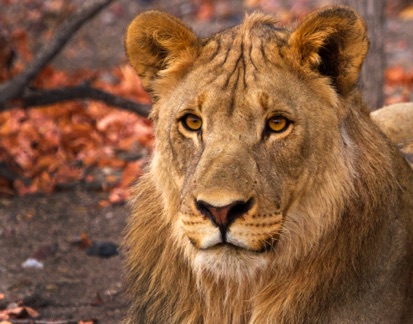
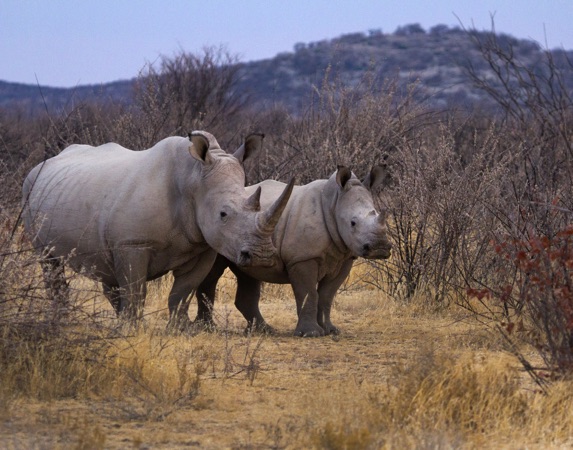
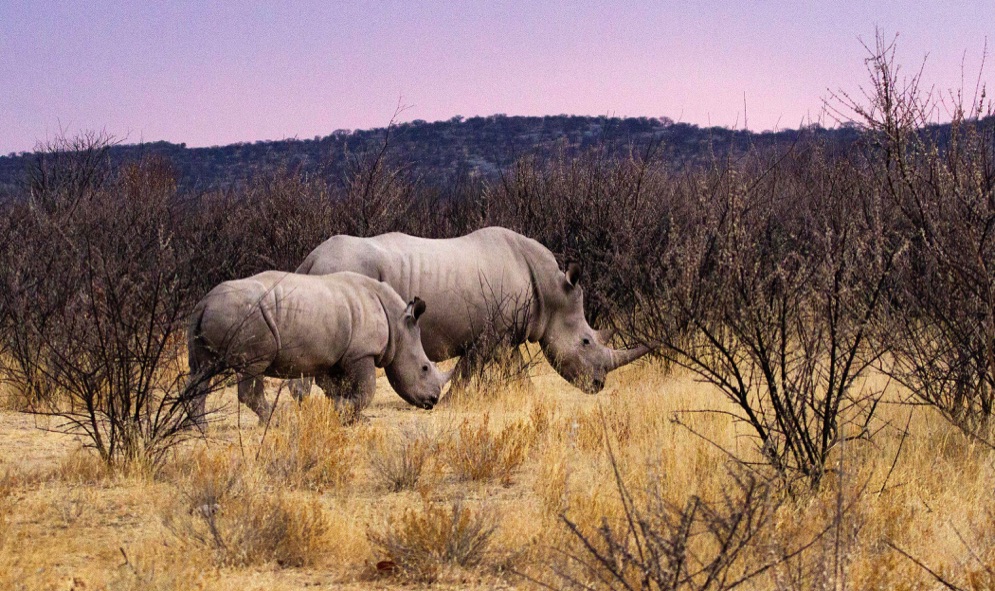
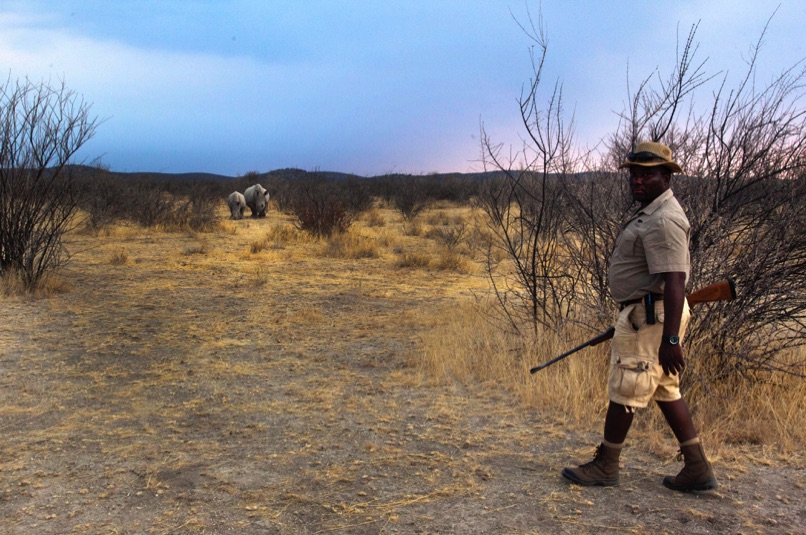
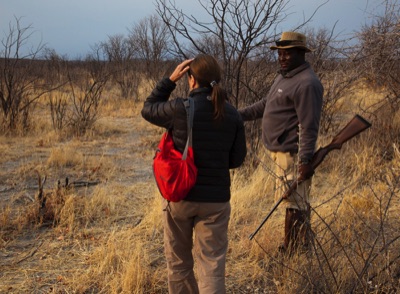
Cheryl and I treked a bit with our guide, Kopana, to get a look at a female White Rhino and her 8 month old calf. Kopana had worked in an anti-poaching unit before he started guiding.
White and Black Rhinos are both grey in color. The White Rhino got its name from its wide mouth, a mistranslation of a Dutch word for wide, "widj".
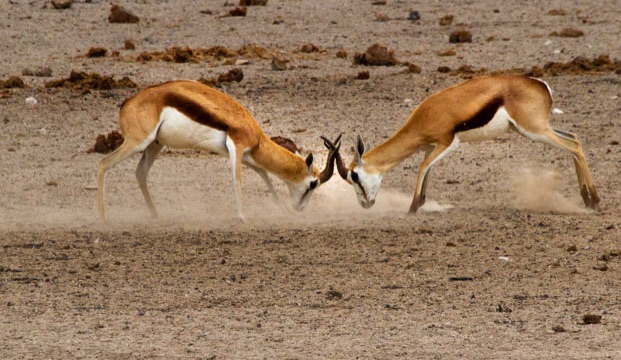
Oryx males go head to head.
Springbok males go head to head.
(Antidorcas marsupialis)
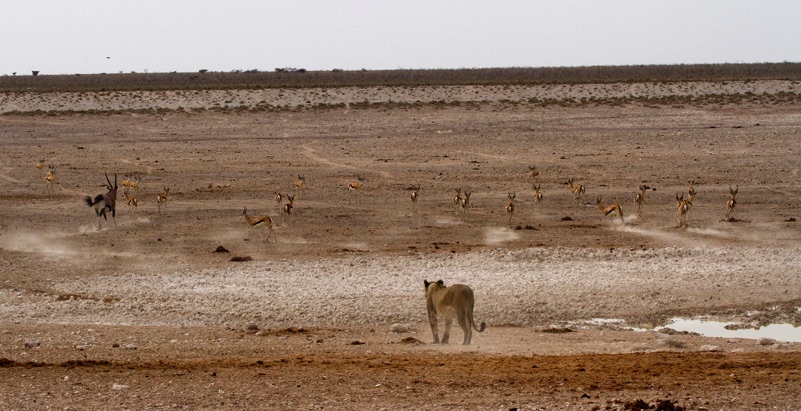
A single lion only has about a 15% hunting sucess rate. This lioness made a bluff charge probably to check for weakened prey. The sucess rate for a 4 or 5 lion pack is over 30%.
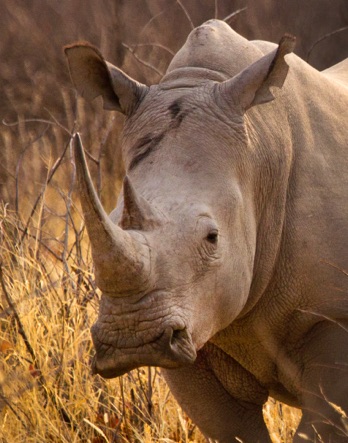
White Rhinos are a bit more predictable and approachable than Black Rhinos. We confirmed this to be true when later charged by a Black Rhino and her calf.
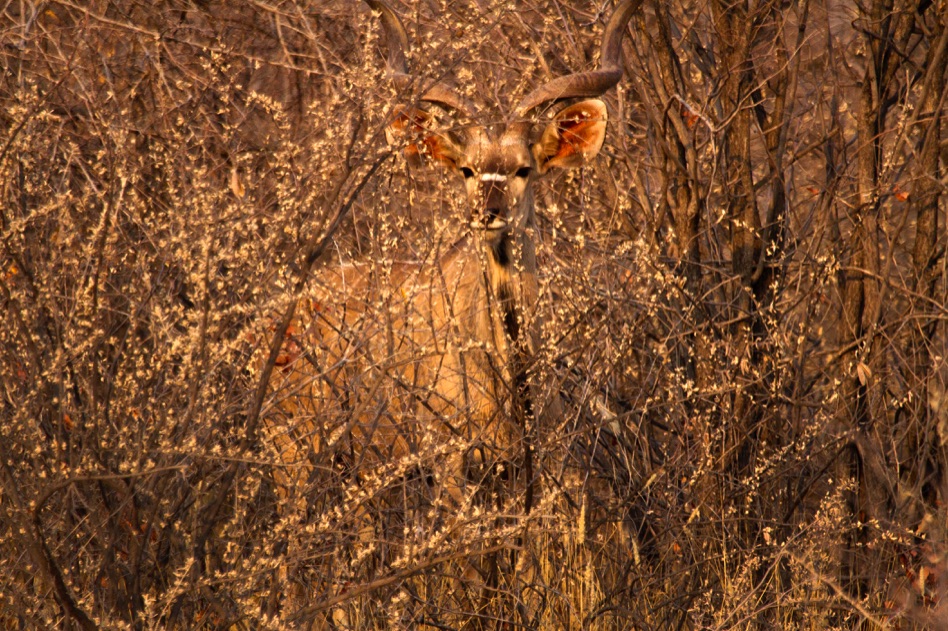
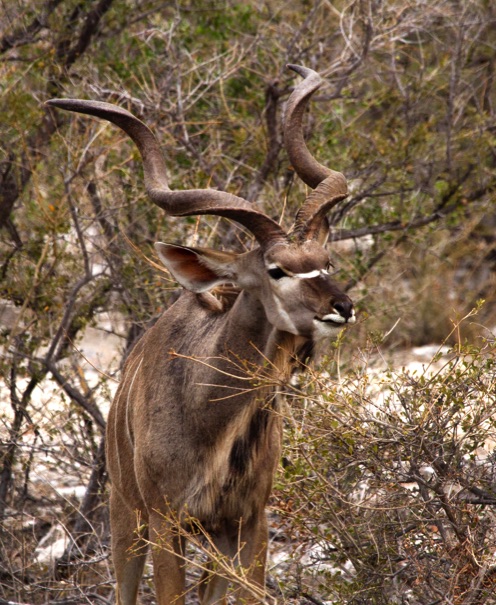
Kudu in the bush.
(Tragelaphus strepsiceros)
the Greater Kudu is one of the largest species of antelope, with males weighing up to 600 pounds.
The horn gets a full twist every 2 years. Their live span is about 10 years.
Predators of the Greater Kudu include lions, leopards,cheetah, hyenas, and hunting dogs.
Apparently the Kudu horn makes a good toothpick.
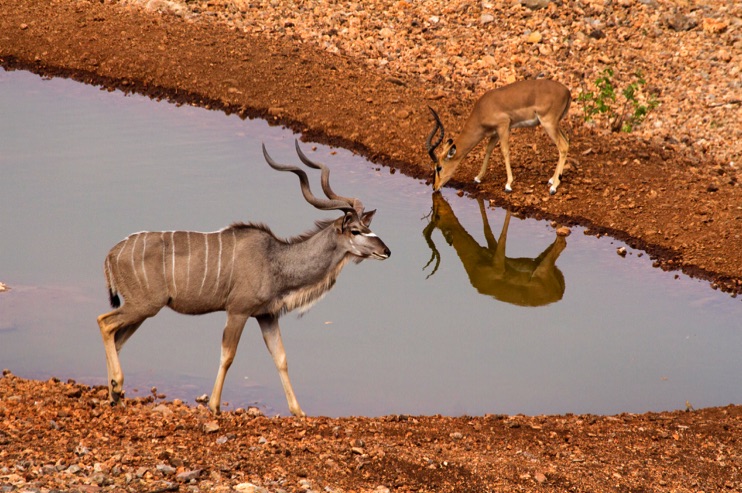
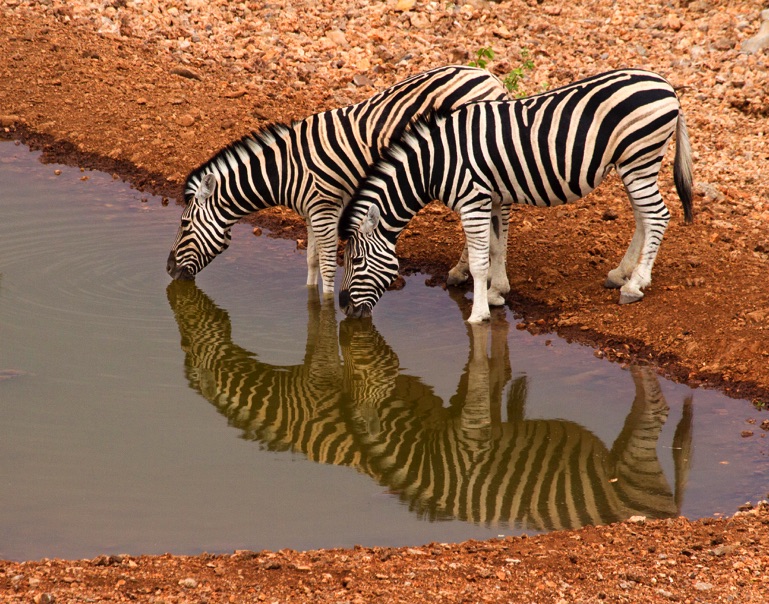
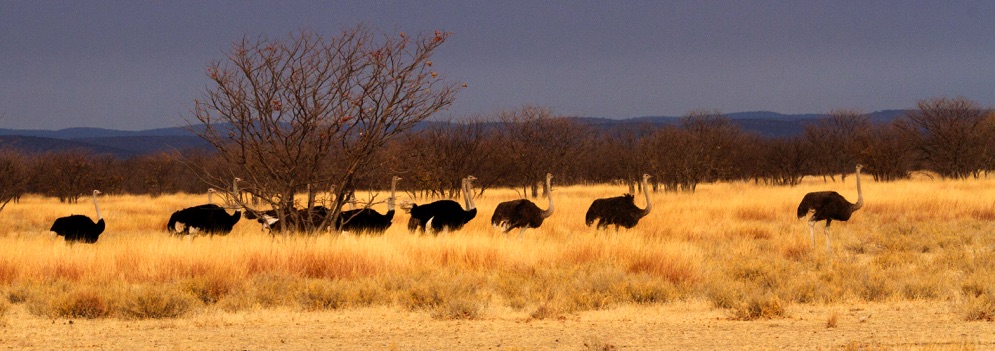
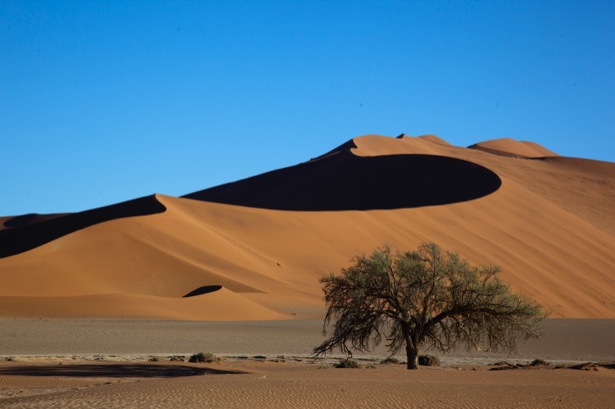
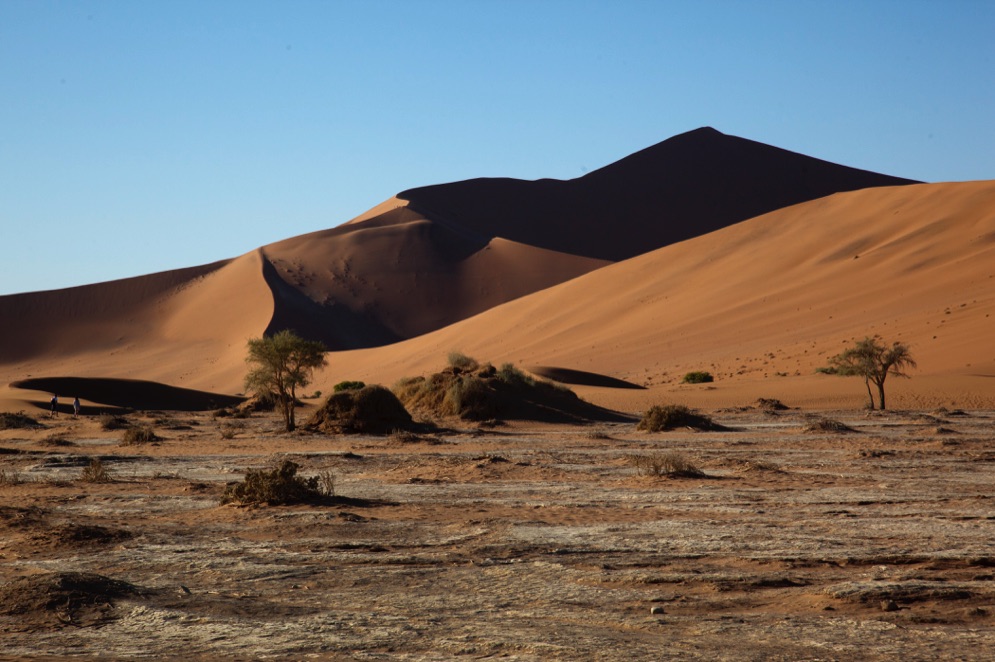
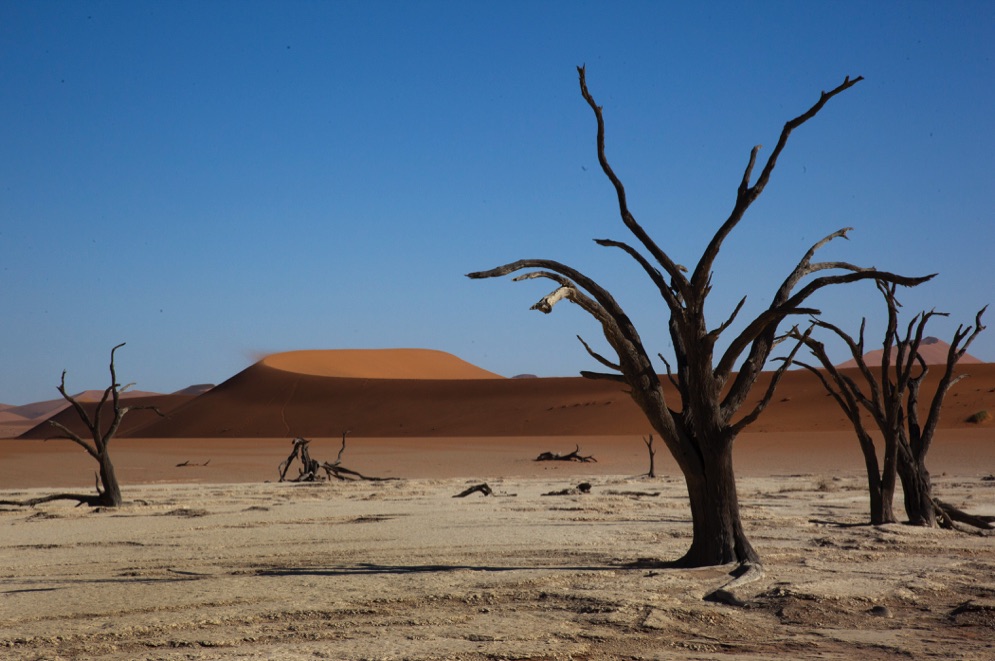
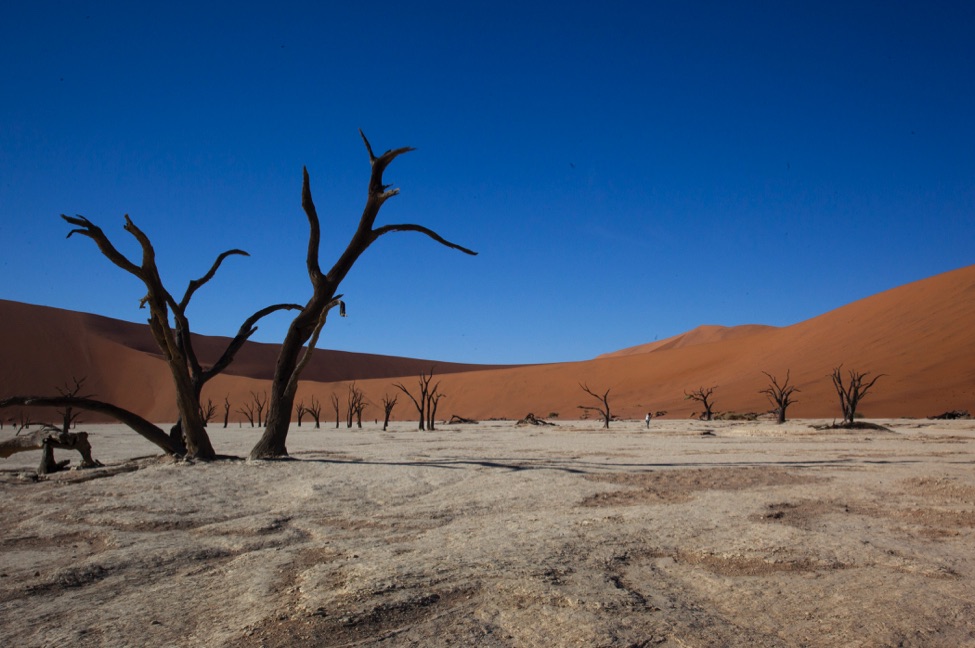
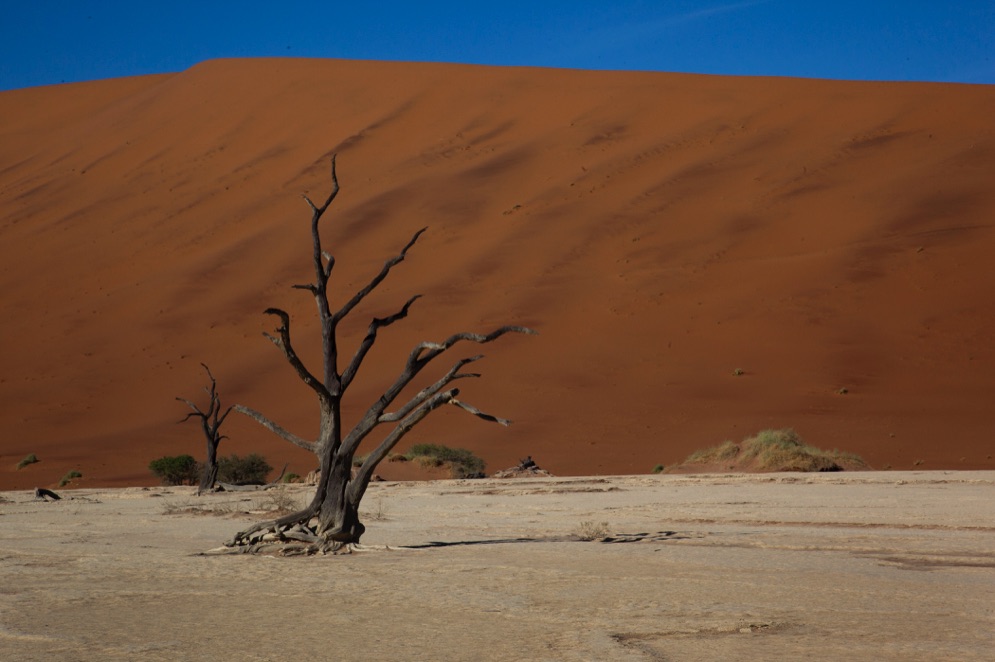
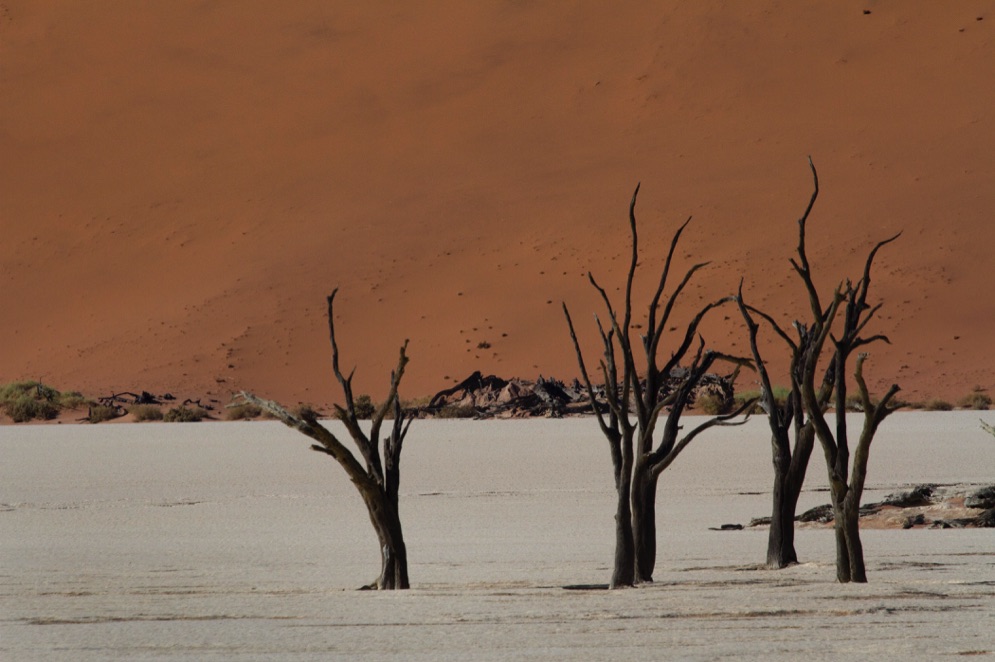
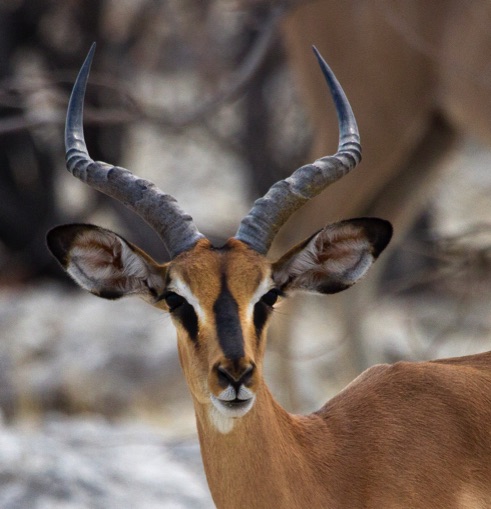
Black-faced Impala
(Aepyceros melampus petersi)
Burchells's Plains Zebra
(Equus quagga burchellii)
Big birds of Namibia. The Ostrich.
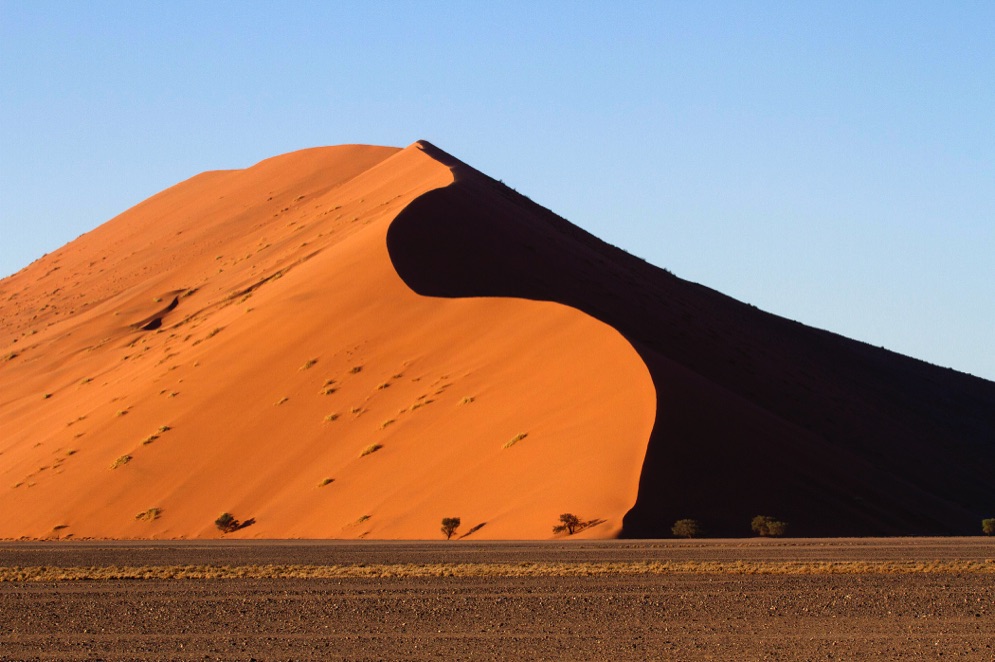
The Dunes of Sossusvlei in the Namib Desert are some of the tallest dunes in the world, reaching up to a 1000 feet tall.
Dead Vlei, is a fascinating area. Camel-thorn tree skeletons, trees that died 600 to 700 years ago when dunes changed the course of the water flow. Scorched by the sun, they don't decompose because of the dry conditions.
The skeletons standing on the white clay pan and surrounded by intense red dunes give the area a surreal appearance and feel as you walk about it.
Dune 45 at sundown
The dune known as "Big Daddy" is over 1000 feet tall.
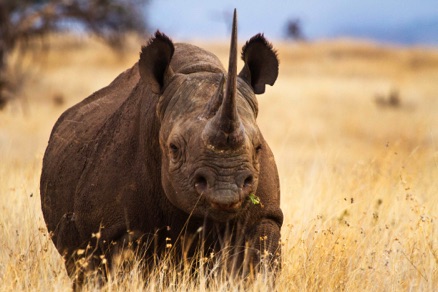
Black Rhinos have a "hooked-lipped".
(Diceros bicornis)
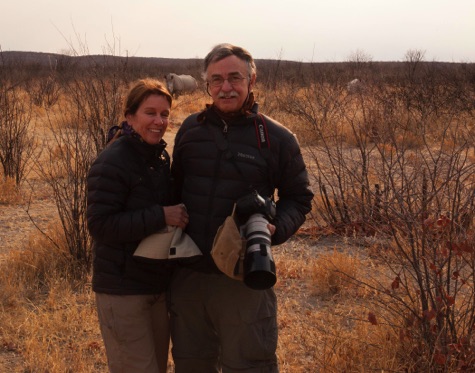
You probably shouldn't turn your back on a 4000 pound rhino with calf.
A pack of 6 lions, females and young males, took down this Kudu.
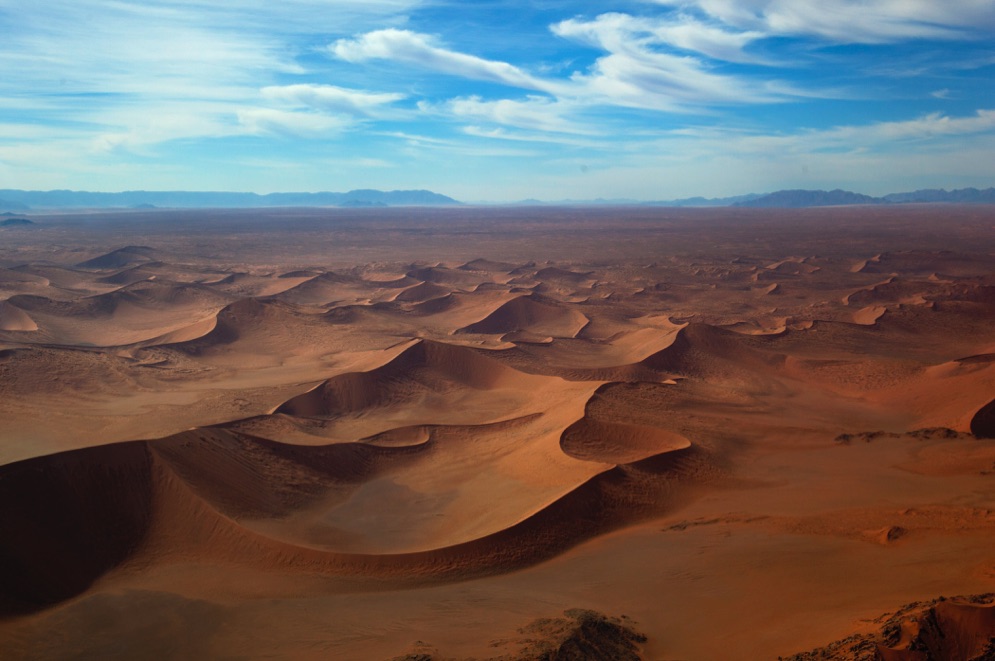
The Namib Desert
The Namib-Naukluft National Park has an area of over 19,000 square miles, making it the largest game park in Africa and the 4th largest in the world.
Namib means open space, and Namibia is the "land of open spaces".
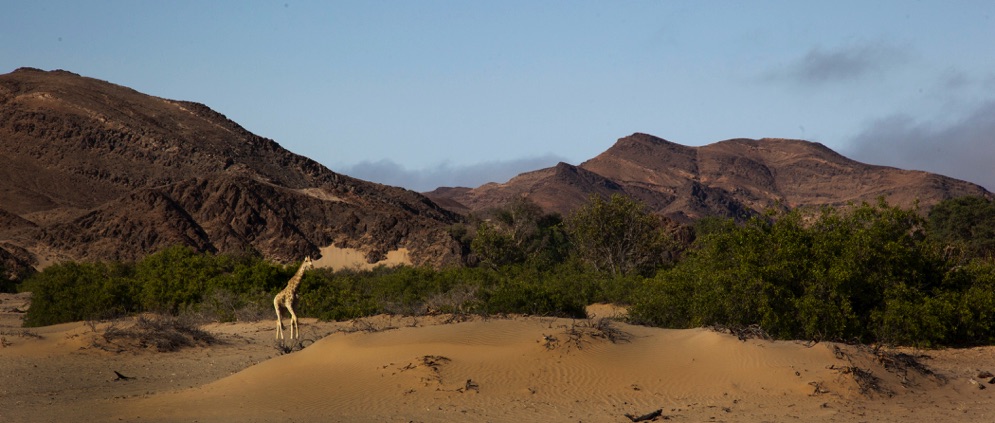
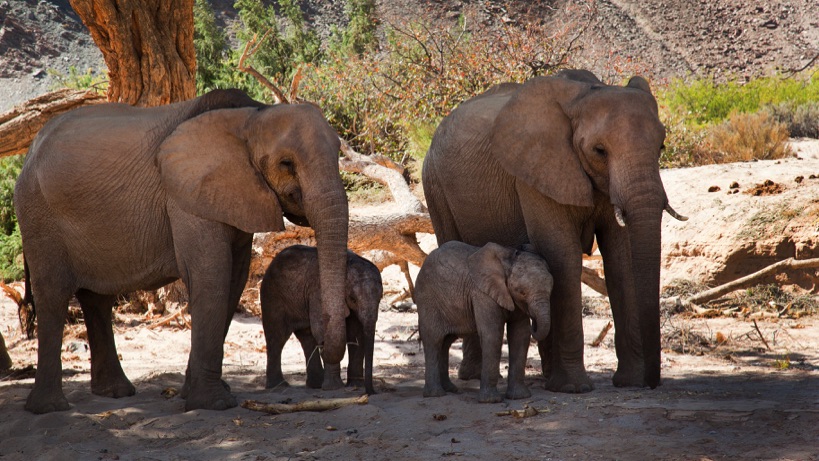
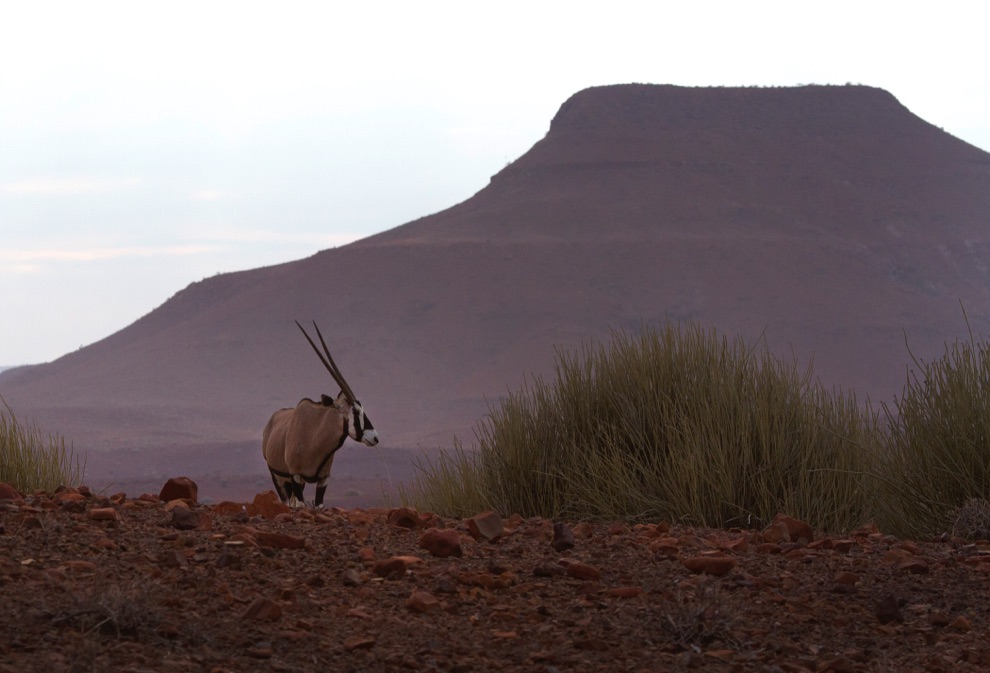
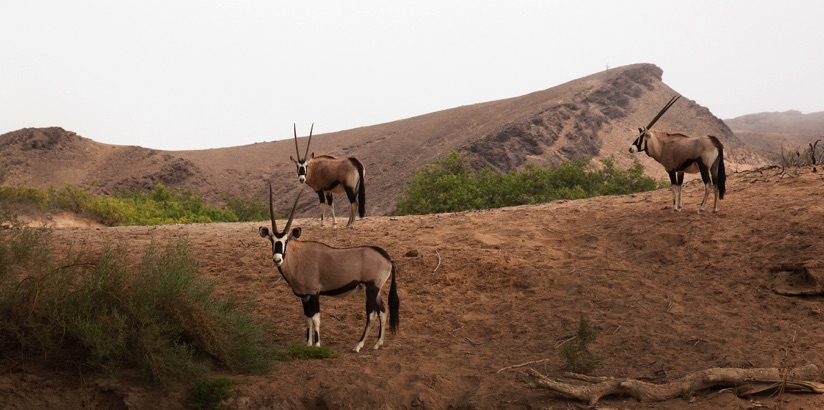
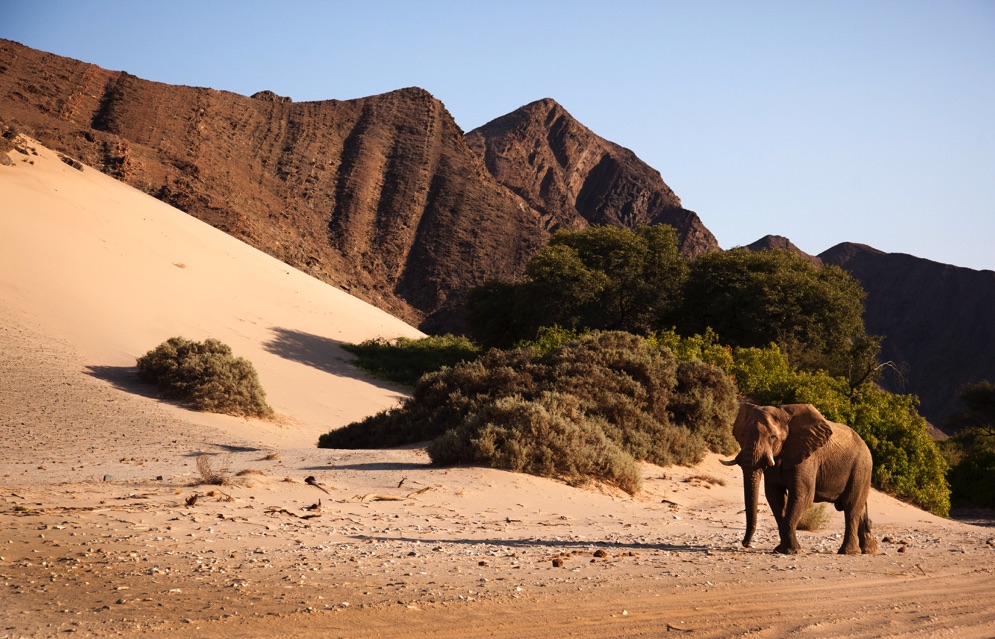
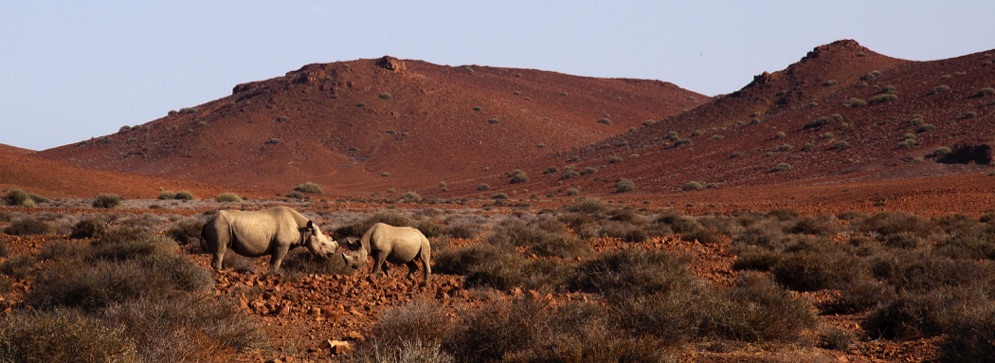
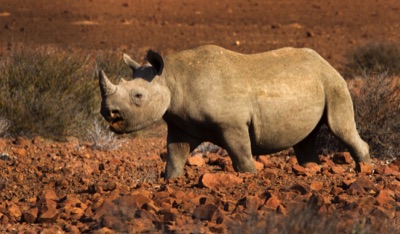
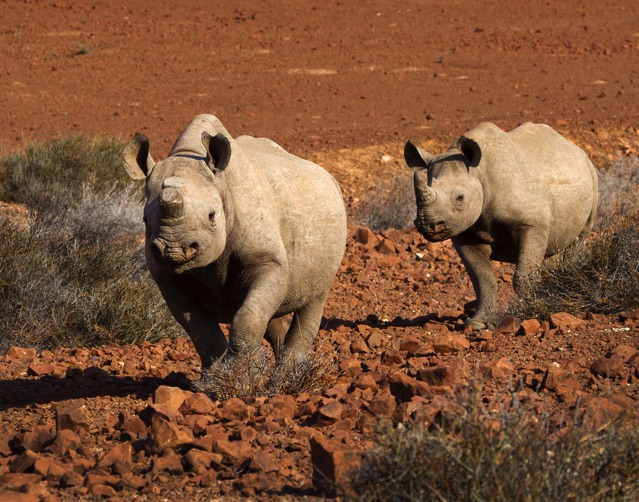
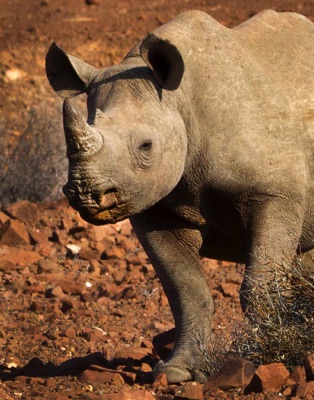
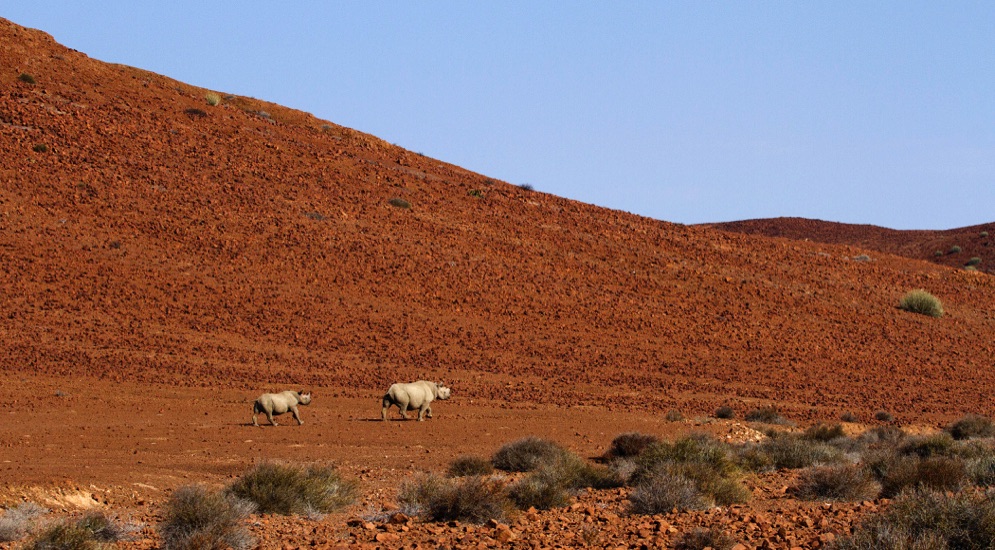
In Damaraland, we had a carefully controlled contact with a female Black Rhino named Top Notch, and her calf, named Troy.
In the 1900's there were hundreds of thousands of the Black Rhino in Africa.
In 1970 it was estimated the number was 65,000. Poaching brought number to 2,300 in 1993.The Save the Rhino Trust has been active for more than 30 years. Through conservation efforts there are now perhaps 5,000 individuals.
Troy is almost 2 years old. He will stay with his mom until he's around 6 years old.
Poaching of the Rhino continues.
The animals are slaughtered and the horn cut out of the skull.
In 2014, four Chinese "tourists" were apprehended at the airport with 14 Rhino horns and one leopard skin. A rhino horn can sell for the equivalant of up to $75,000 US, thought to be an aphrodisiac in some cultures, or used for handles of ceremonial daggers.
The Black or "hook-lipped" Rhino is listed as critically endangered.
Top Notch and Troy made a "mock charge" at us, and we quickly complied with the tracker's intructions to stop shooting and get out of site behind bushes. They broke off the charge and headed off. They have poor eyesight, but excellent hearing and sense of smell.
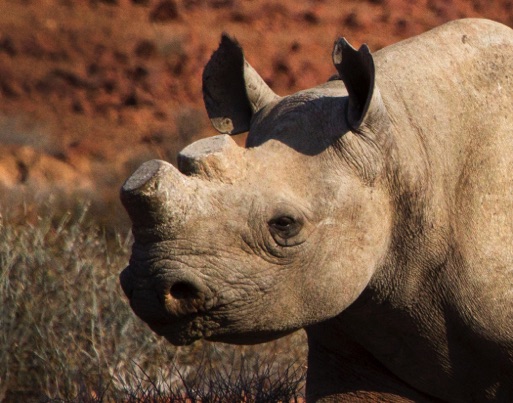
A Rhino becomes pregnant every 5 to 6 years and has a 15 month gestation.
Top Notch, is 22 years old. Named for the notch in her left ear, she was sedated and had her horns cut off 2 months ago to make her unattractive to poachers.
Black Rhinos may reach 40 to 50 years of age.
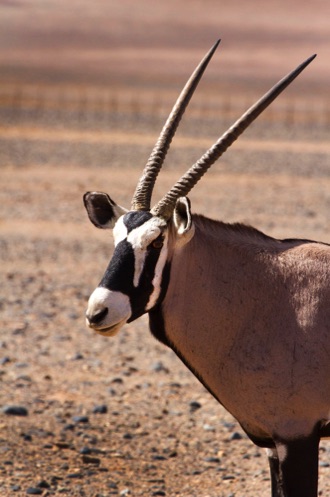
The Oryx or Gemsbok is specially adapted to the desert environment.They can go months without drinking water, getting some moisture from the plants they eat.
In extreme heat they pant rapidly, such that the blood in the nasal veins cools slightly due to evaporation. This blood then flows through a structure called the carotid rete, a vascular complex below the brain. The blood that reaches the brain is then up to 4 degrees cooler. Springbok also have a structure like this.
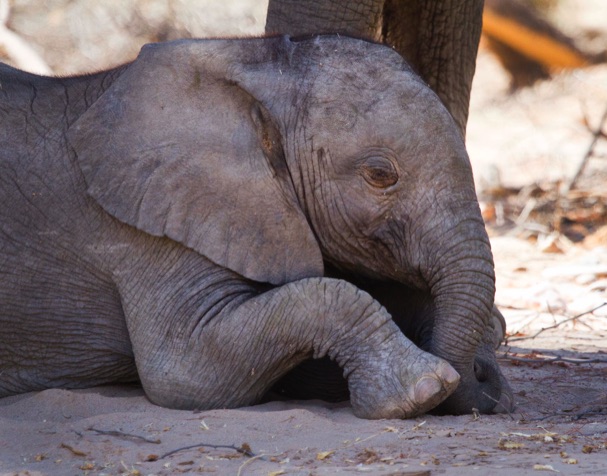
The young elephant on the left is 5 months old,
on the right, 10 months old.
The birth weight of the elephant is over 200 pounds.
Gestation period is 22 months.
They suckle for about 2 years.
They can walk under their mom's belly until about 1 year old.
The lifespan of an elephant can be up to 70 years.
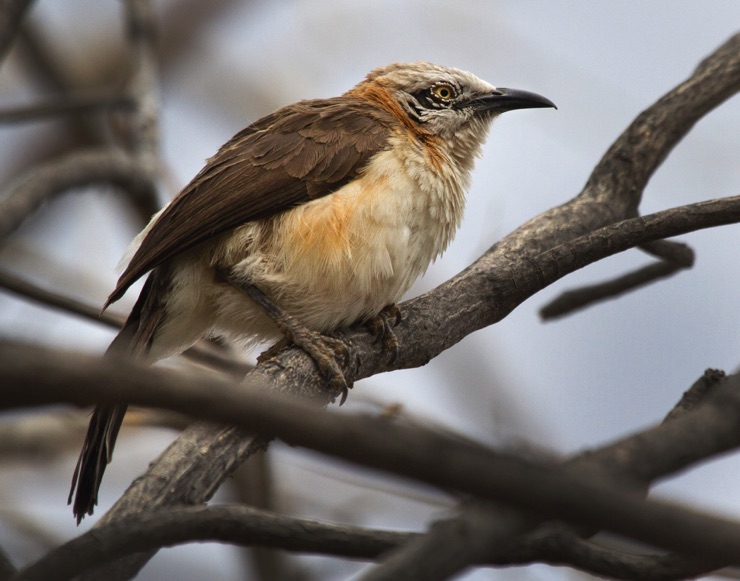
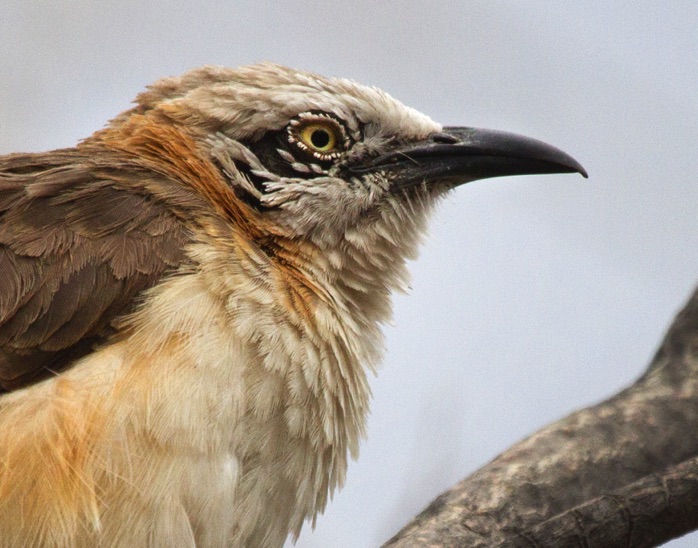
Bare-cheeked Babbler
(Turdoides gymnogenys)
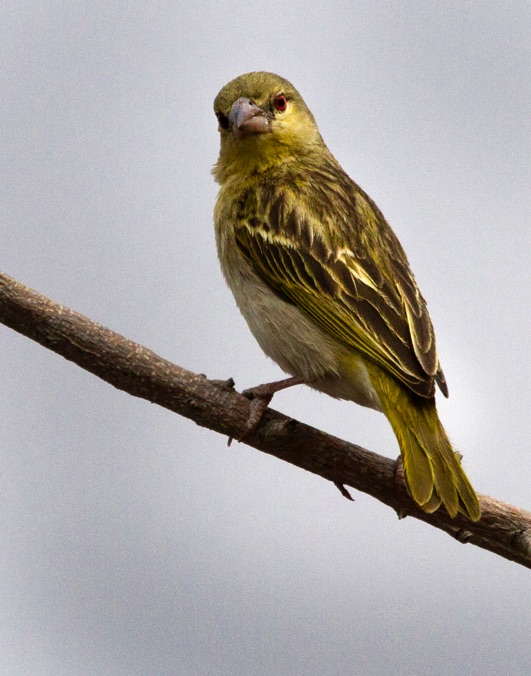
Southern Masked Weaver-female
(Ploceus velatus)
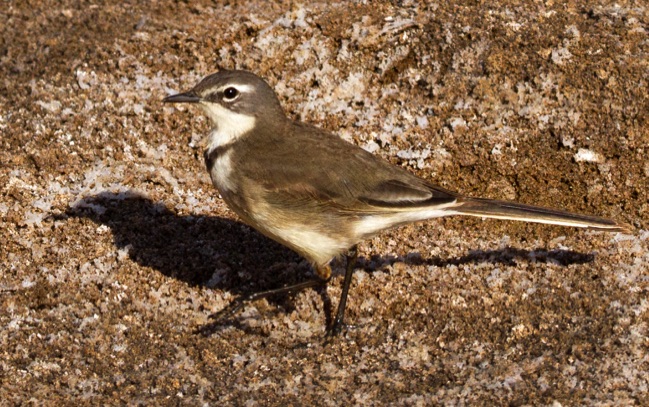
Cape Wagtail
(Motacilla capensis)
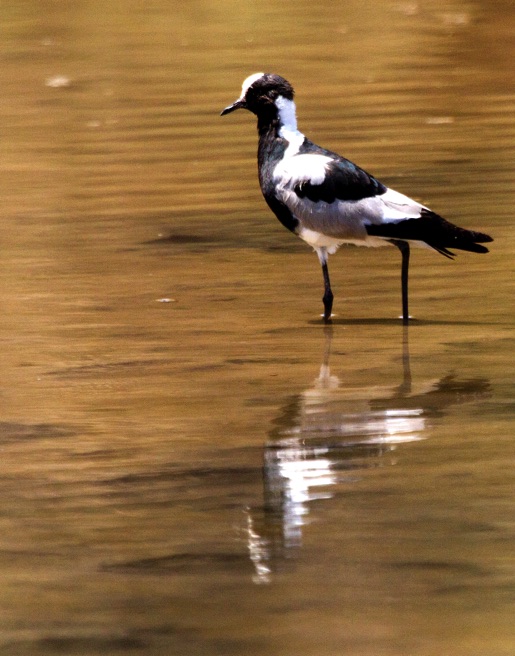
Blacksmith Plover or Lapwing
(Vanellus armatus)
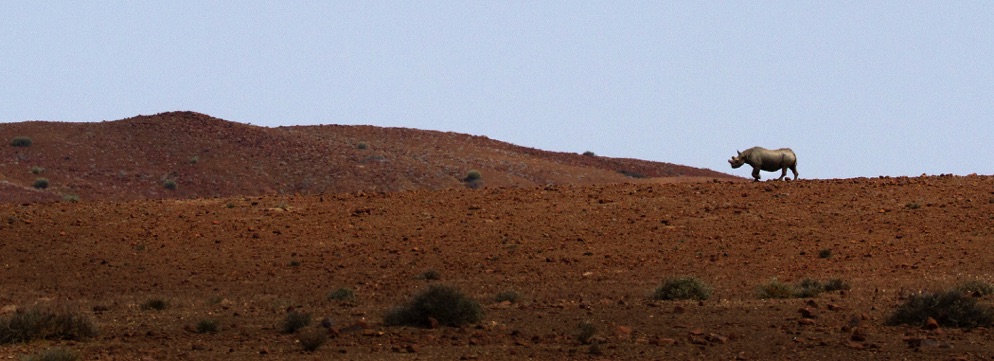
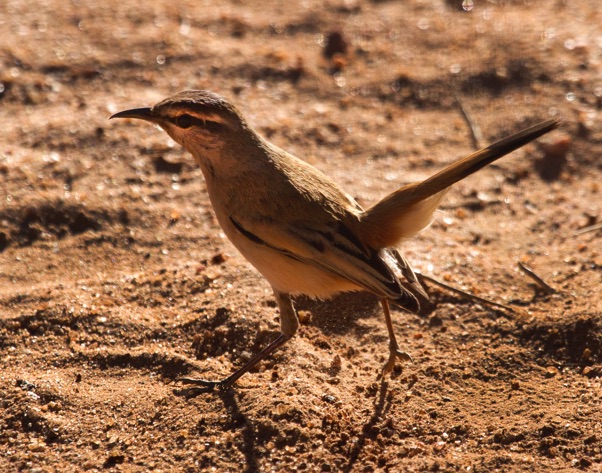
Kalahari Scrub Robin
(Erythropygia paena)
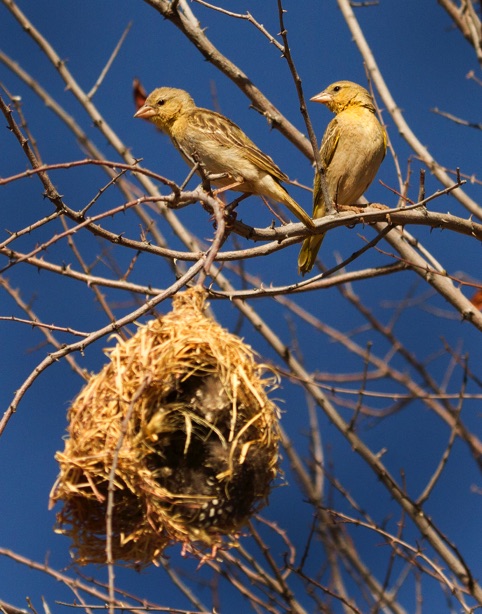
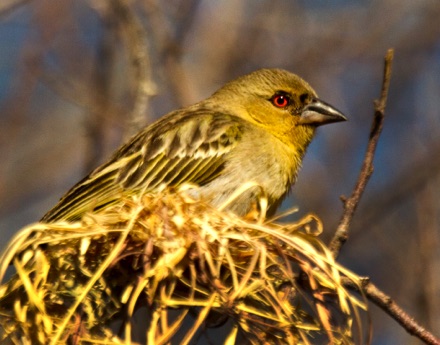
Golden Weavers
Notice they have lined their nest with Guineafowl feathers
(Ploceus xanthops)
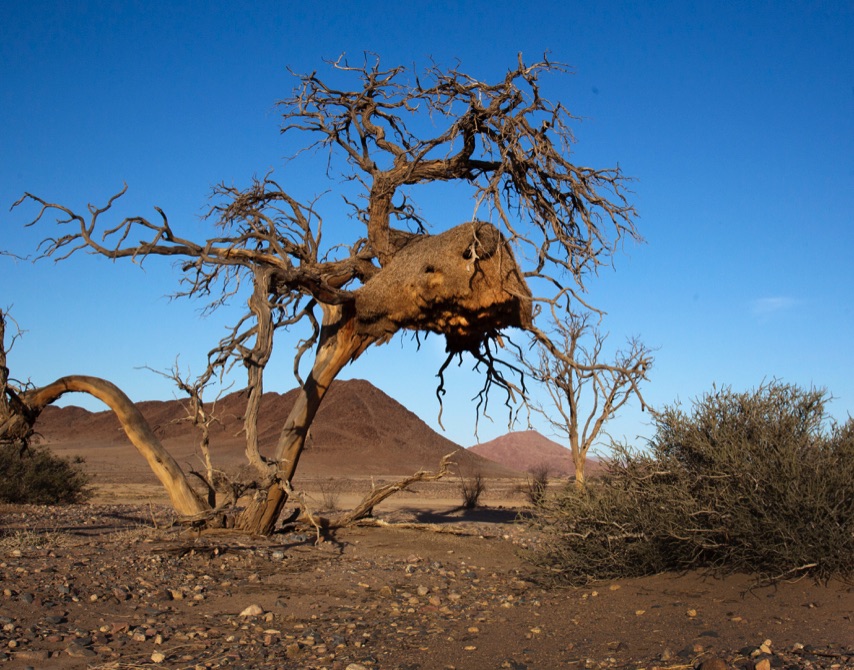
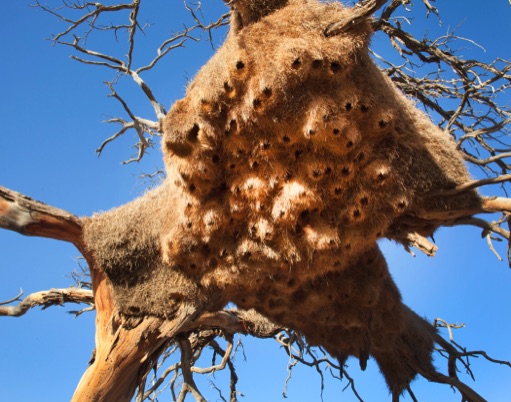
Sociable Weaver Nest
It might take 5 years for a nest to get to this size, perhaps nests for 60 birds. Besides individual nest there are connections to a communal breeding chamber.
The birds will return to this nest for over 25 years.
(Philetairus socius)
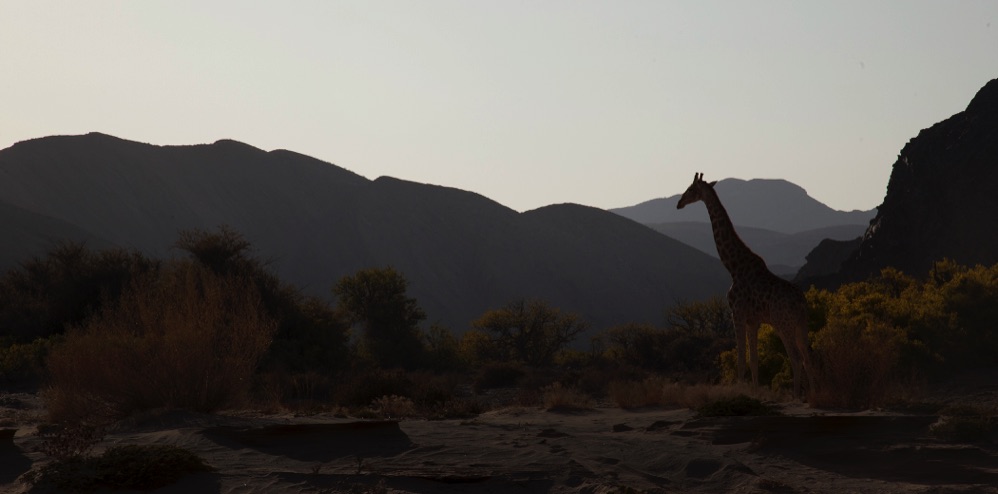
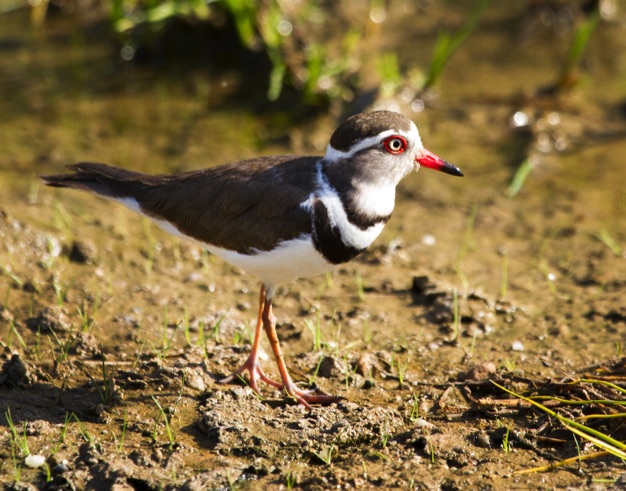
Three-banded Plover
(Charadrius tricollaris)
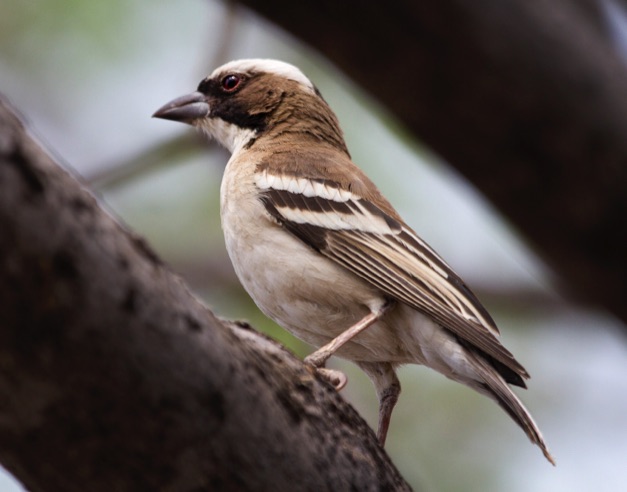
White-browed Sparrow Weaver
(Plocepasser mahali)
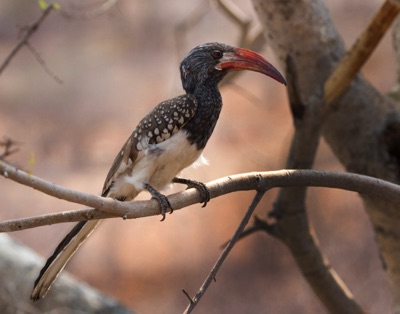
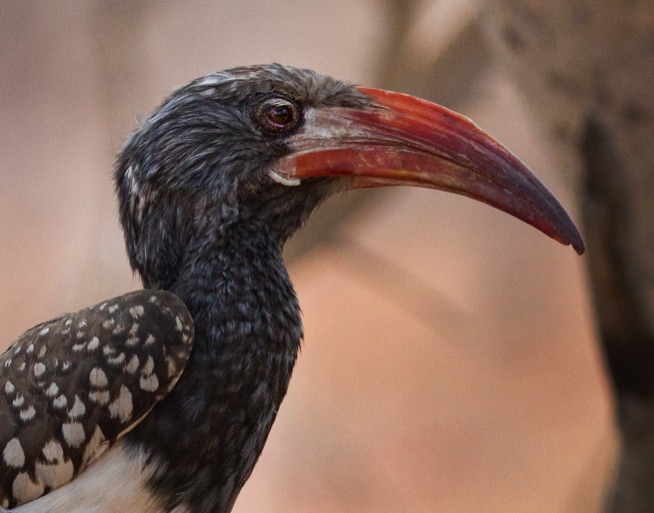
Monteiro's Hornbill
(Tockus monteiri)
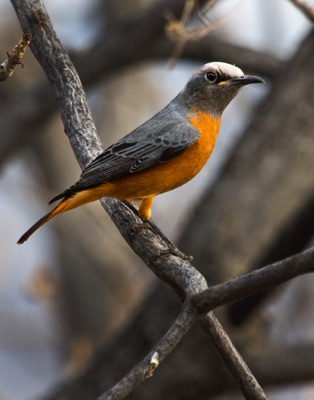
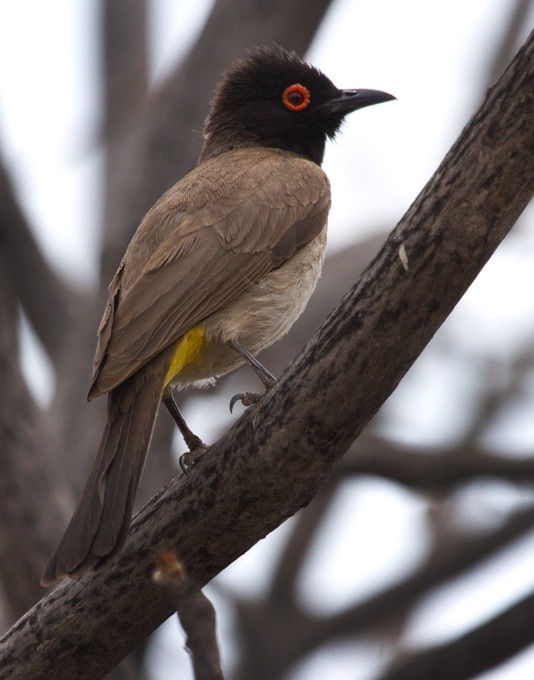
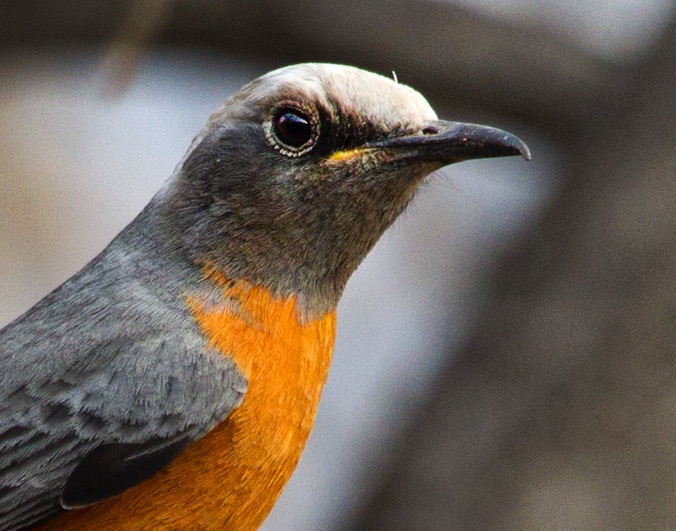
Short-toed
Rock Thrush
(Monticola brevipes)
Red-eyed Bulbul
(Pycnonotus nigricans)
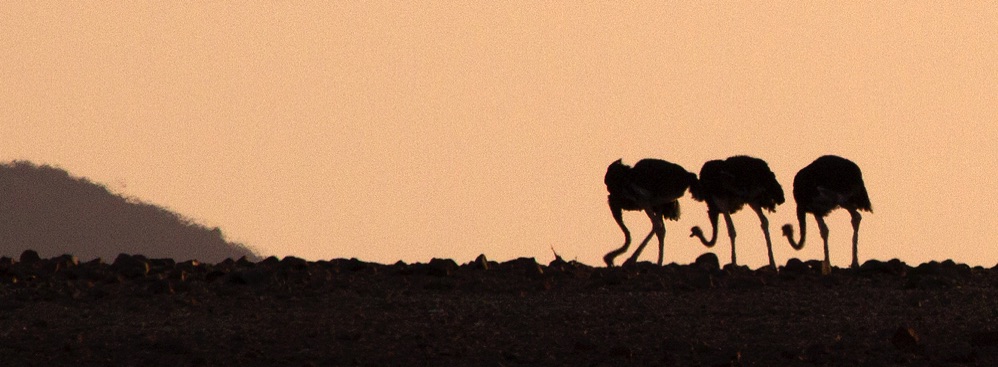
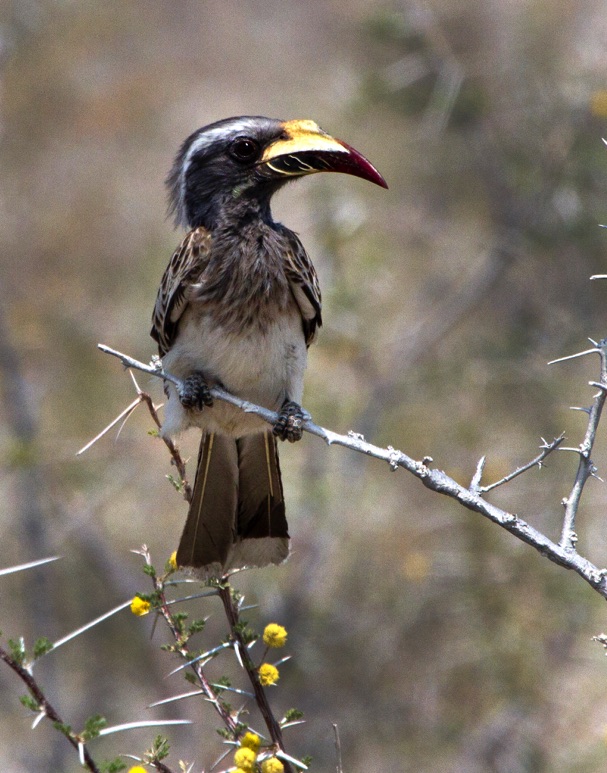
African Grey
Hornbill
(Tockus nasutus)
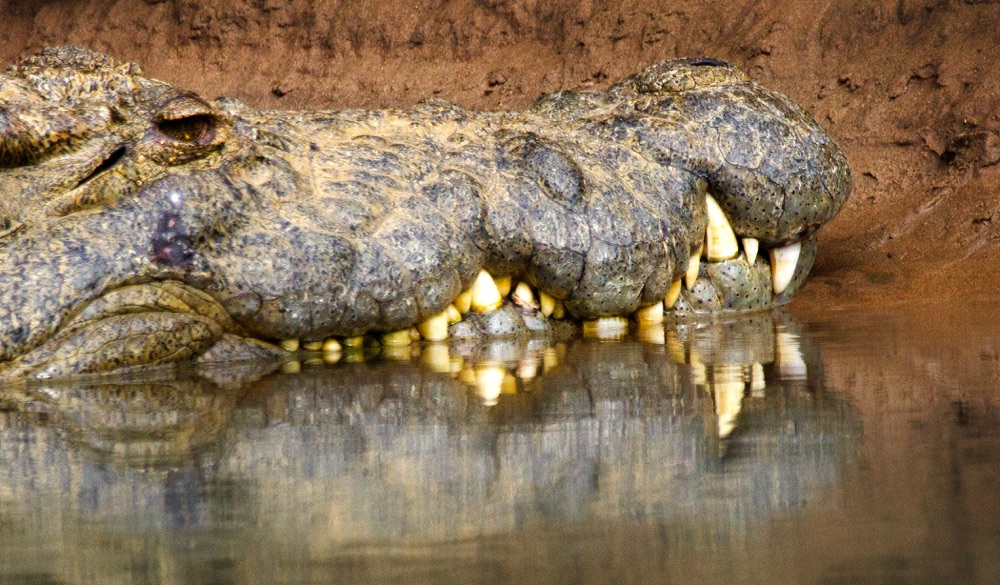
The Kunene River starts in the mountains of Angola, and flows over 650 miles to the Atlantic Ocean. It forms the northern border of Namibia and is one of the few perennial rivers in Namibia, meaning it flows most of the time in normal rain years. Most are ephemeral rivers, only flowing after a rainfall.
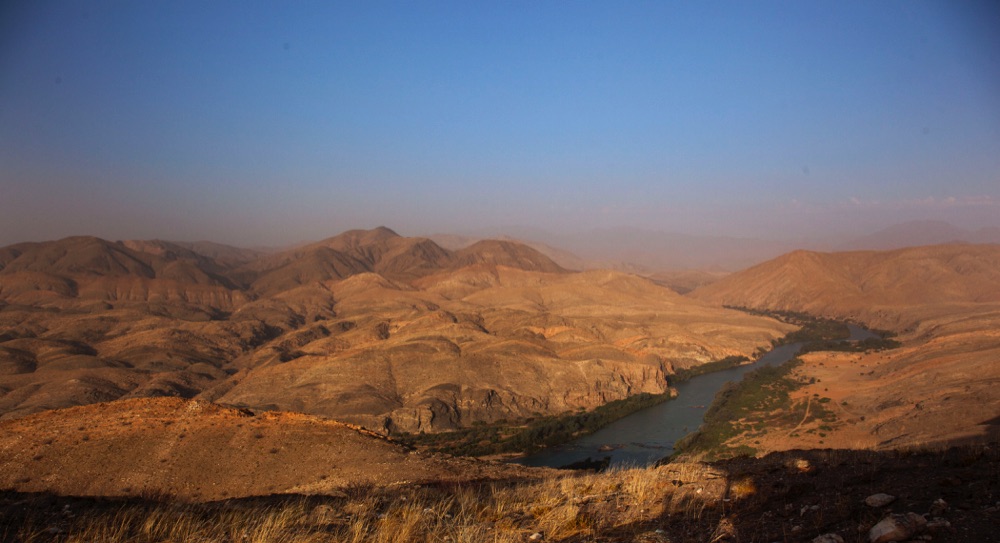
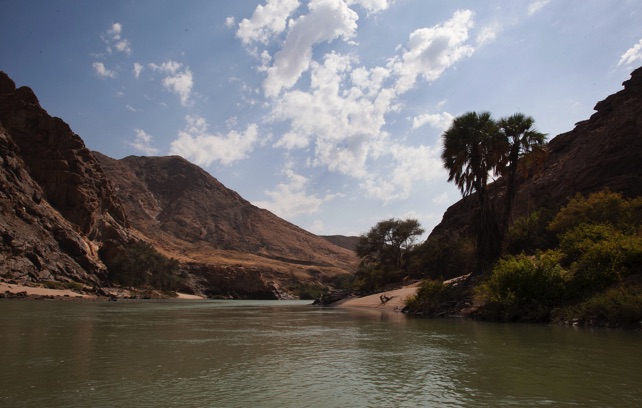
The river creates an oasis along its shores
that teems with wildlife.
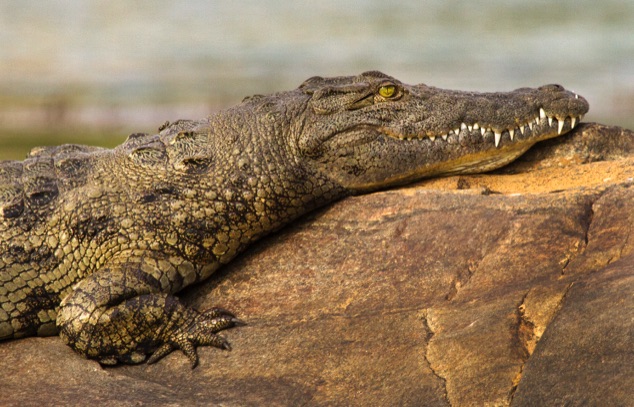
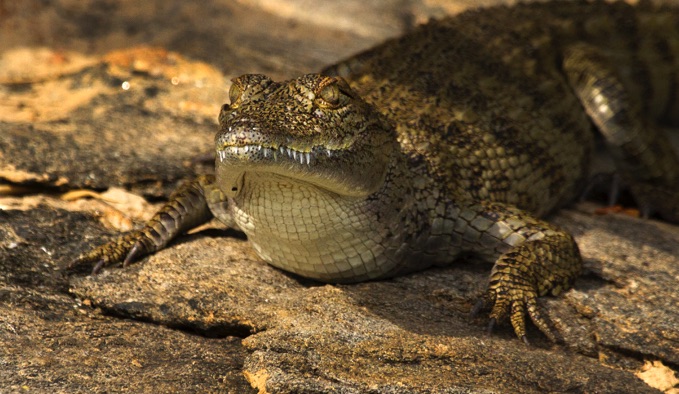
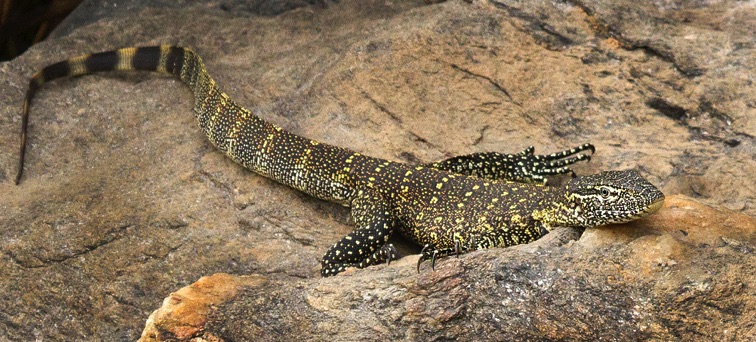
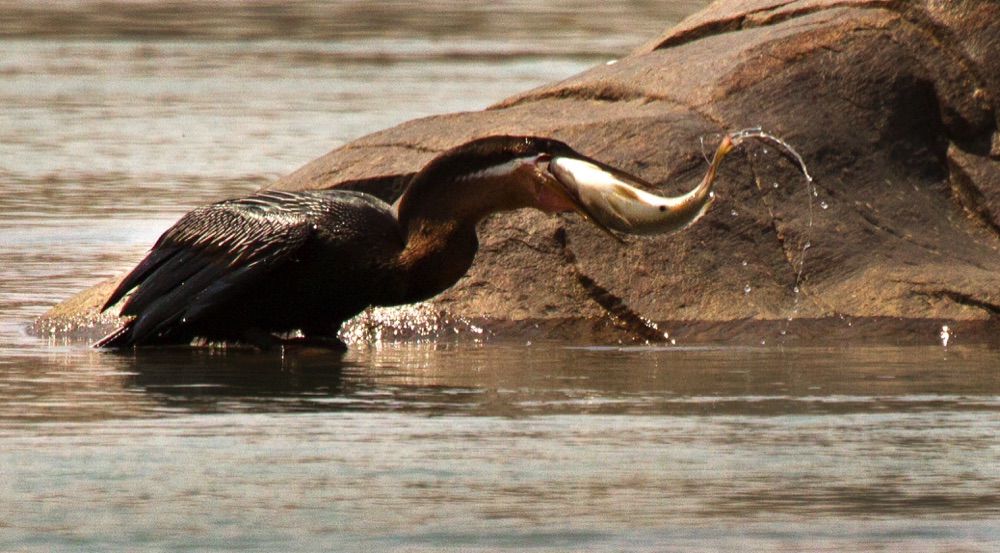
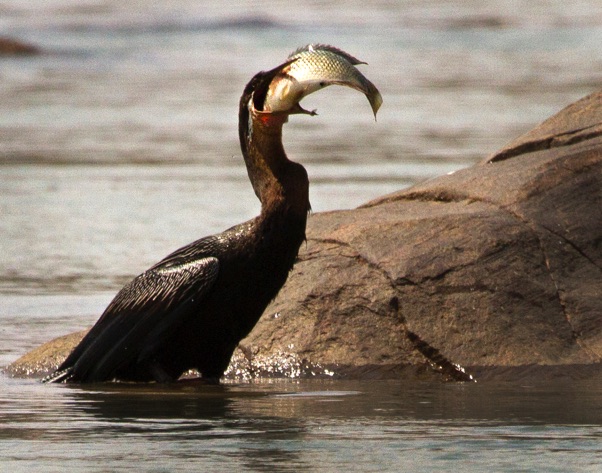
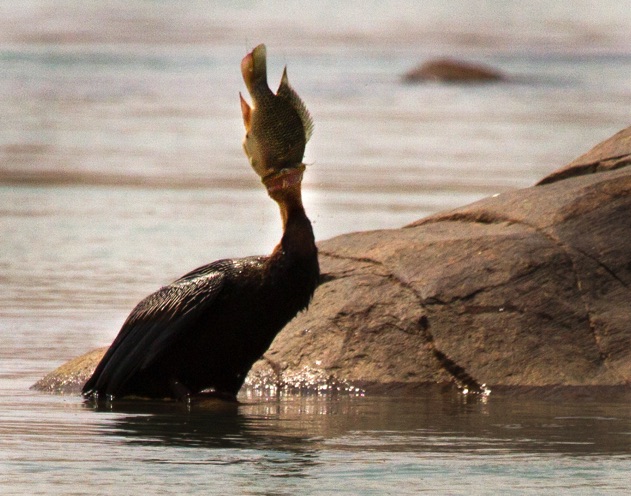
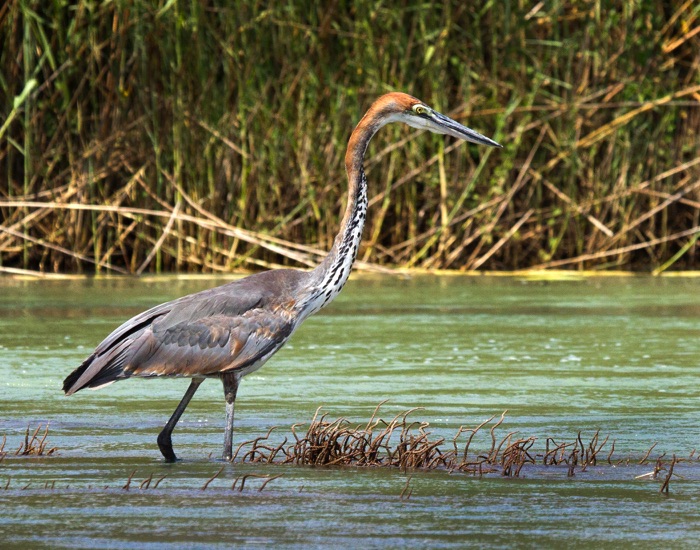

Water Monitor Lizard
(Varanus niloticus)
The Nile Crocodile is found in abundance on the Kunene. It feeds on fish, antelope, zebra, buffalo... and humans. It is often said that it kills more people in Africa than any other animal.
Our last stop in Namibia was at a lodge on the Kunene River, bordering Angola. While on the river we found this African Darter catching and trying to swallow a fish.We've watched birds like Cormorants in the past reposition fish by tossing them up and around to make sure the fish goes down the right way. This Darter got the fish turned around but seem like it was going to be a big job to get it down. We watched him work for quite awhile then floated on. A Goliath Heron and a Crocodile also watched the Darter from a distance, maybe waiting their turn.
Goliath Heron
(Ardea goliath)
the world's largest heron, has a wingspan of 6 to 7 feet.
Young Nile Crocodiles
(Crocodylus niloticus)
The Nile Croc can be up to 16 feet long and weigh up to 1500 pounds
There was a saying you heard often in your medical training.
"If you hear hoofbeats, think of horses, not zebras". Reminding you to consider the more common diagnoses before thinking about the rare, exotic diseases. Unfortunately, when you're in Africa.....
African Darter (Anhinga rufa)
(Struthio camelus)
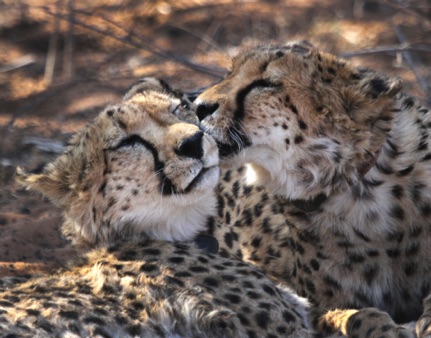
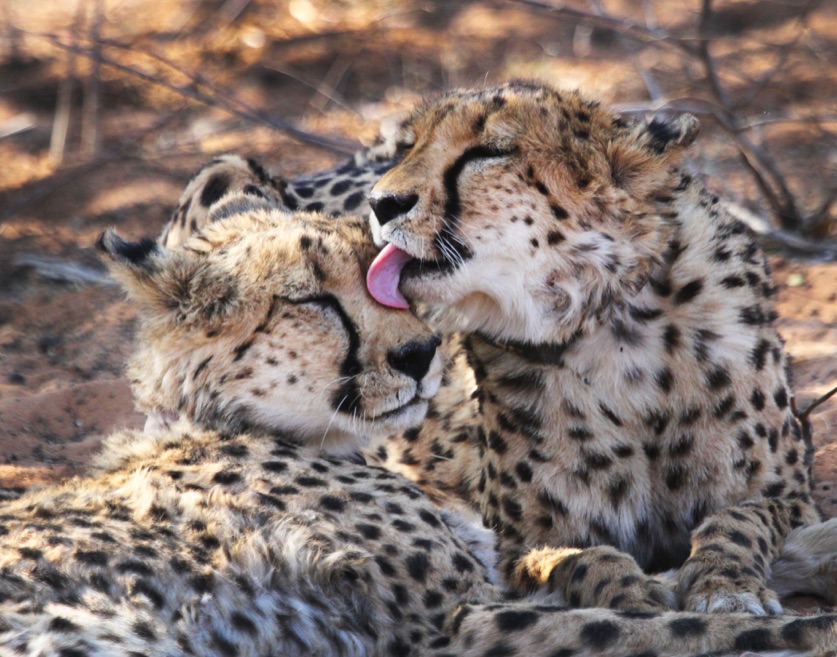
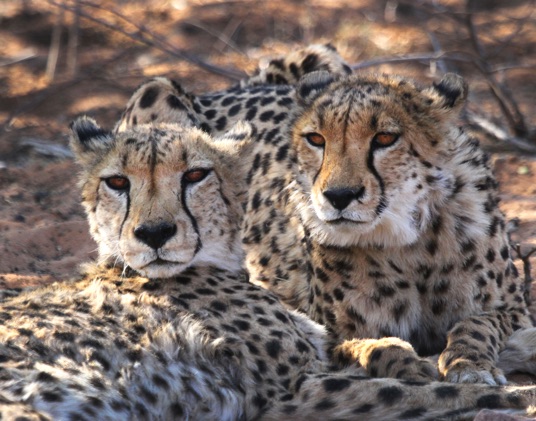
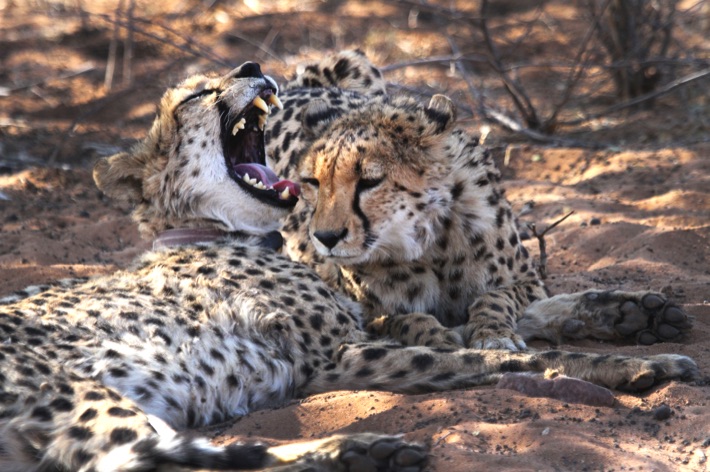
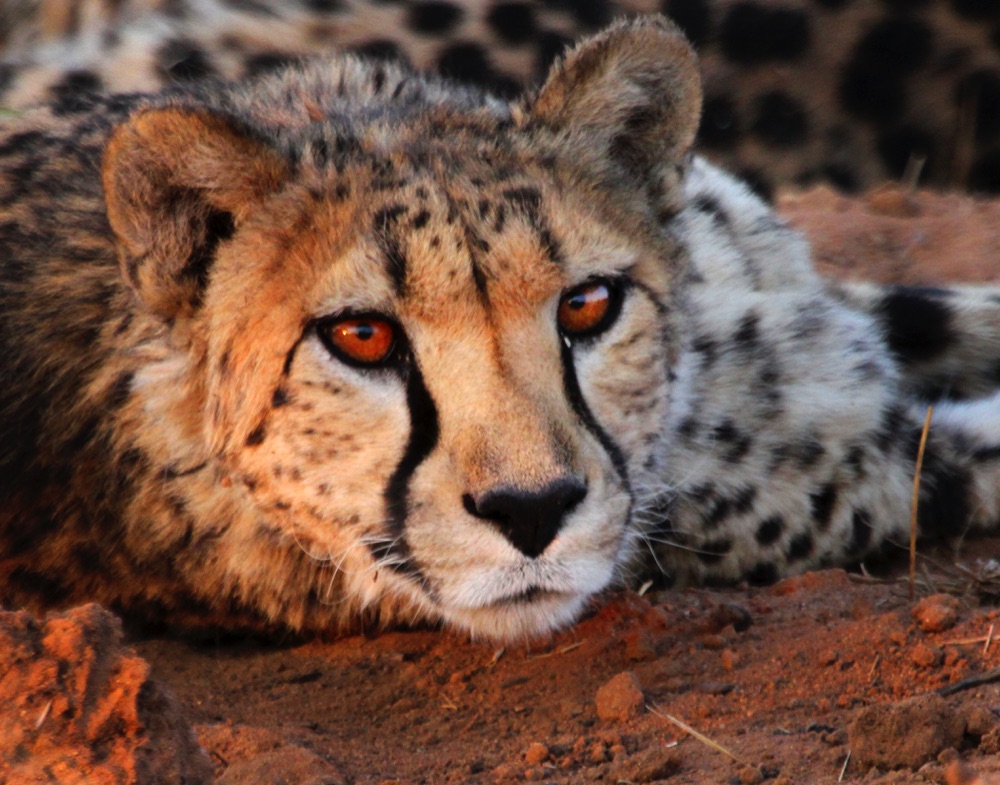
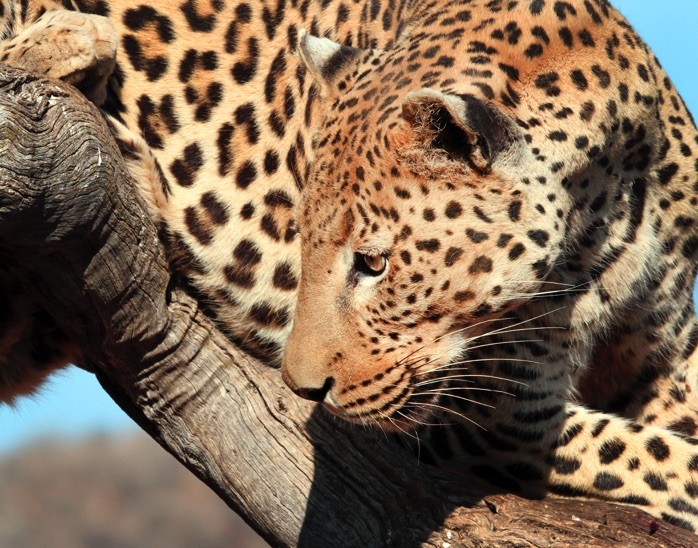
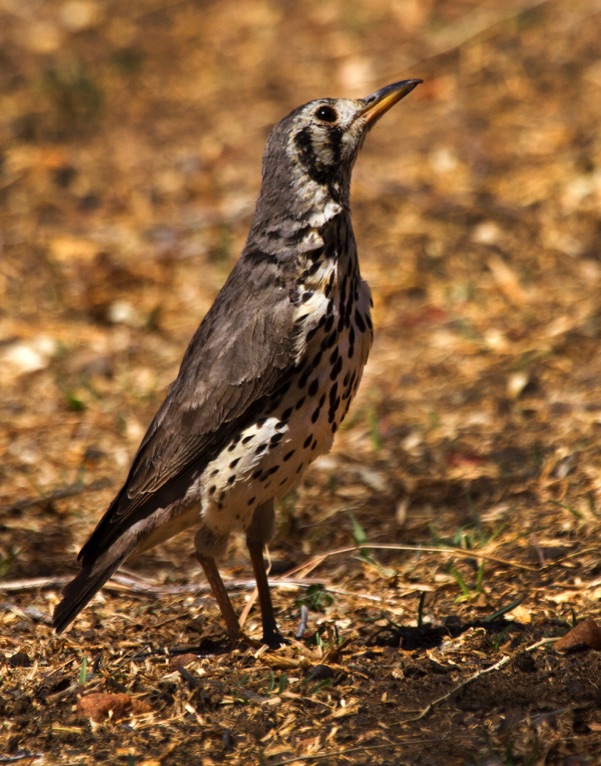
Groundscraper Thrush
(Psophocichla litsitsirupa)
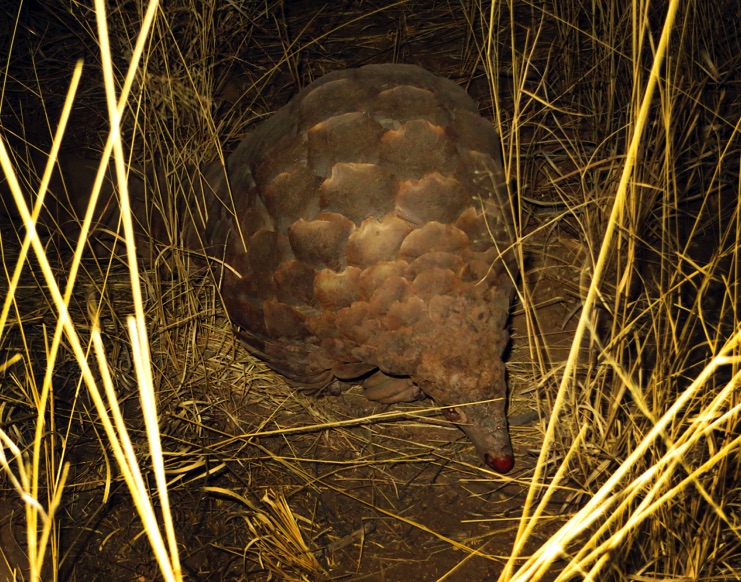
Cape or Temminck’s Ground Pangolin
(Smutsia temminckii)
It is generally considered very good luck for you if you sight this rarely seen creature. We found one on our first night on safari.
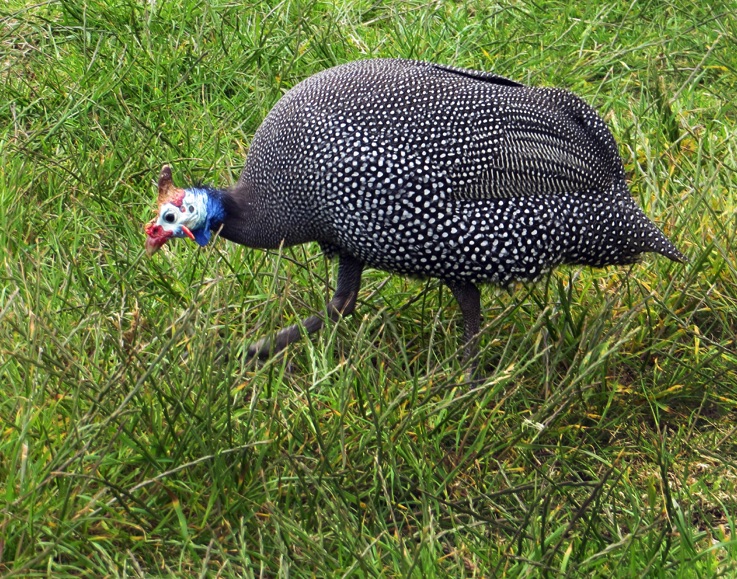
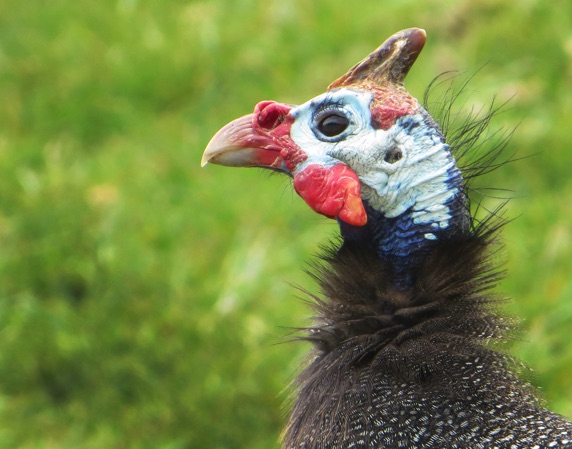
Helmeted Guineafowl
(Numida meleagris)
Cheetahs of the Okonjima Nature Reserve
(Acinonyx jubatus)
The AfriCat Foundation has rehabilitated injured/orphaned cats and released over a 1000 animals back into the wild.
They help resolve the conflict with the farmers whose cattle and goats are threatened by the wild cheetahs
Cheetah populations have dropped over 90% in the last 100 years. Perhaps 10,000 remain in the wild. The main reasons for the decline are human-wildlife conflict, disappearing habitat, and loss of prey.
White or square-lipped rhinoceros
(Ceratotherium simum)
(Giraffa camelopardalis)
(Panthera leo bleyenberghi)
(Loxodonta africana africana)
The Cheetah is the fastest land animal, with average pursuit speeds of 40 mph, but has been clocked at 70 mph over short distances.
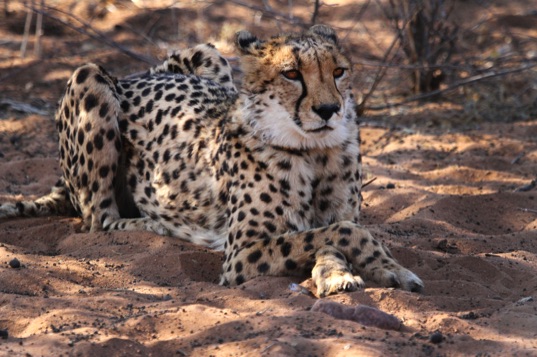
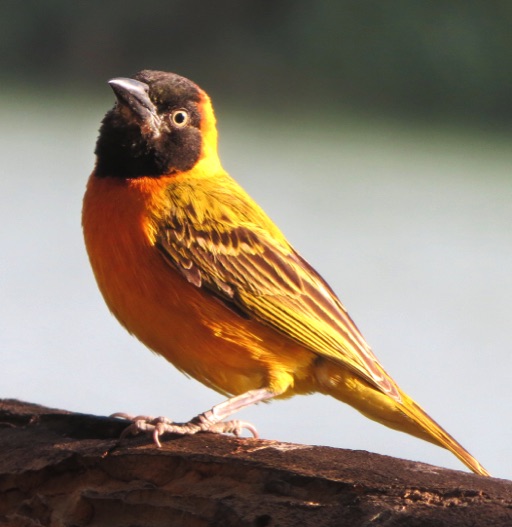
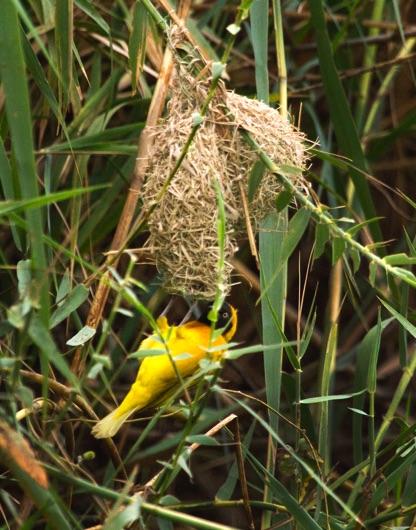
The male prepares the nest to attract his mate.
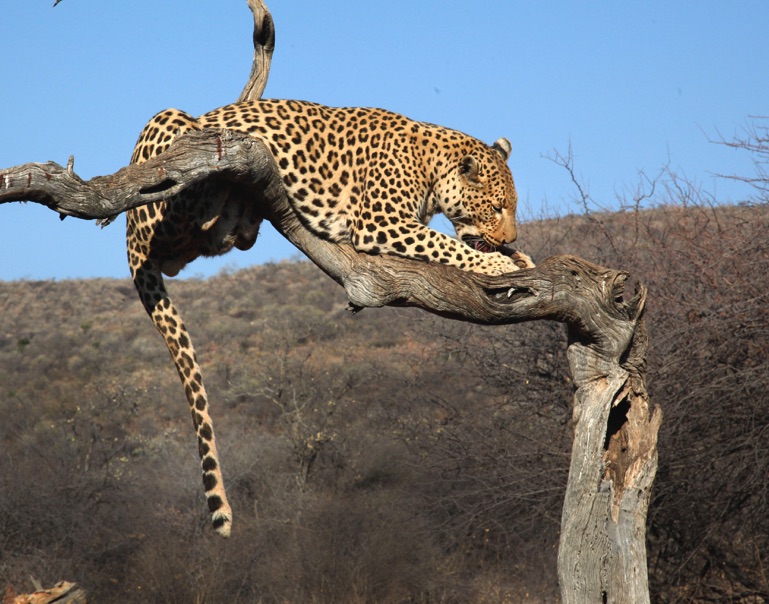
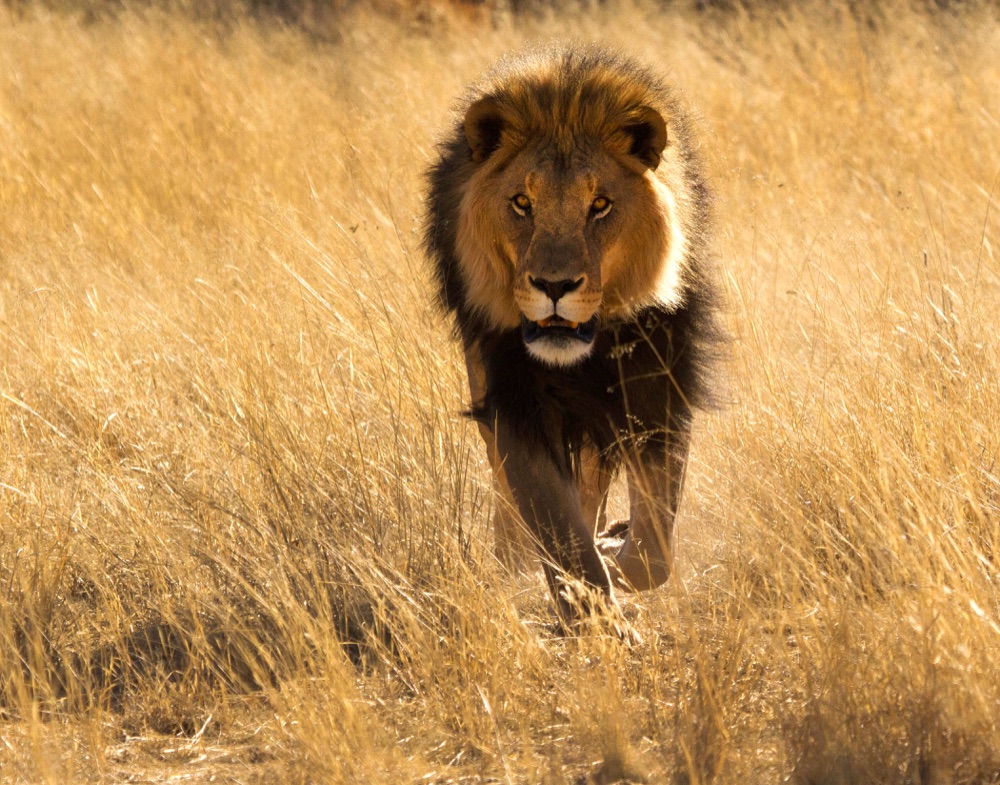
Leopard
(Panthera pardus)
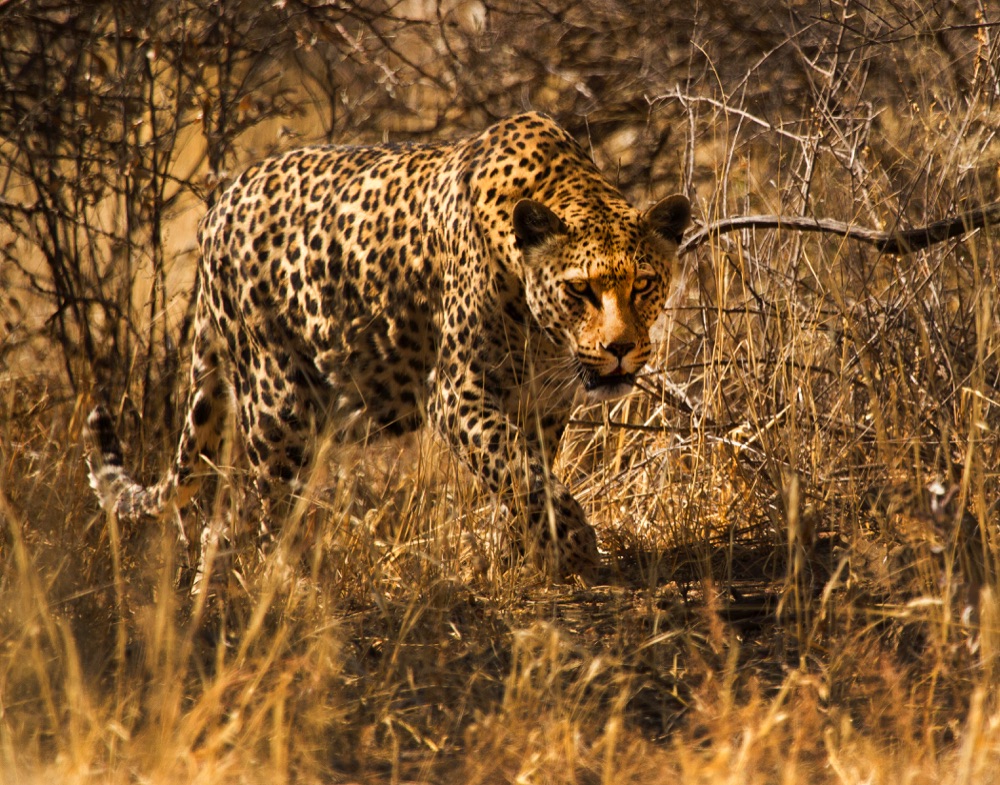
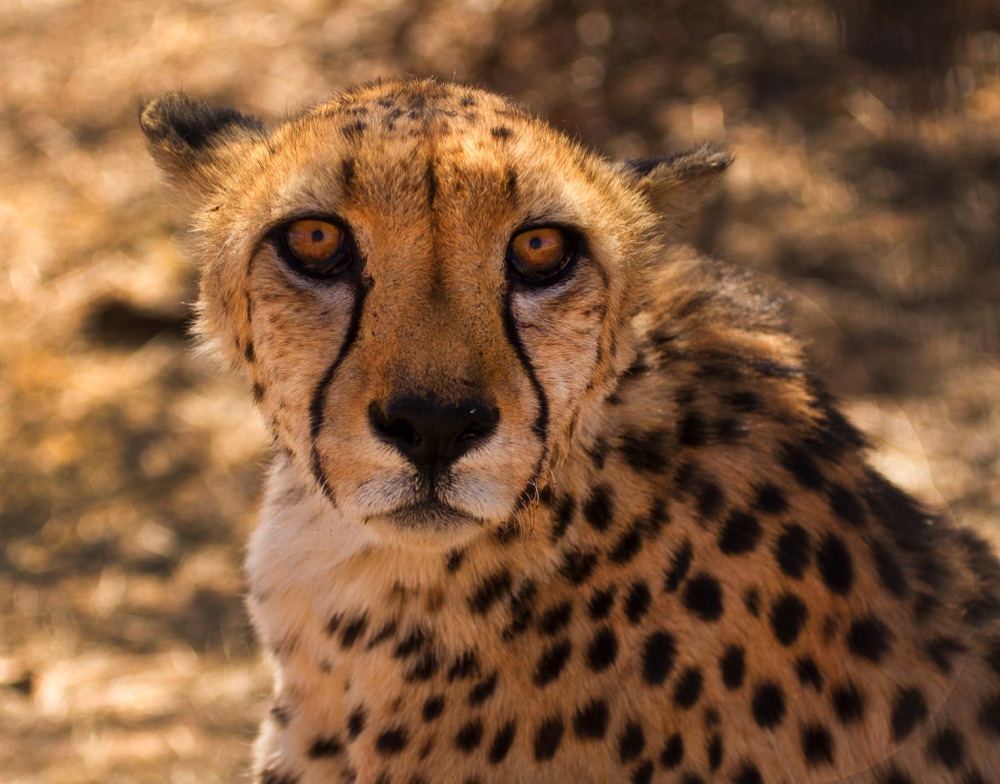
Remember, you don't have to out run the leopard, or the lion, or the cheetah. You just have to outrun the slowest member of your group.
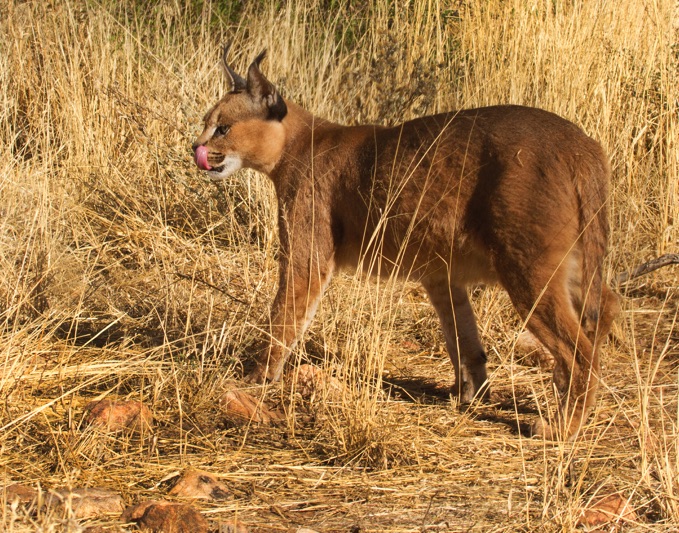
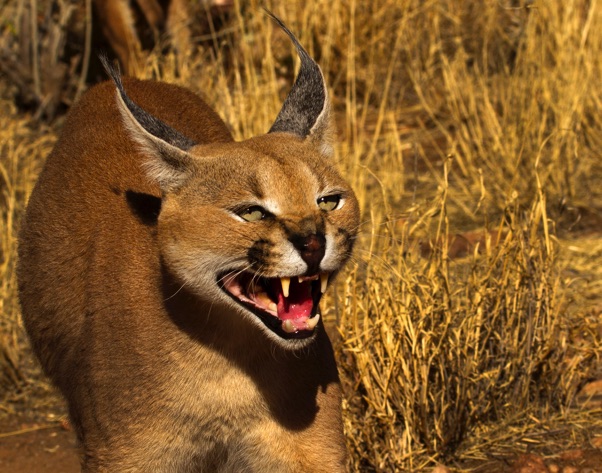
Caracal
(Caracal caracal)
The ear tassels are unique among African cats.The Caracal is mostly nocturnal.They can leap almost 10 feet in the air to catch birds in mid-air. Diet mostly of small mammals, birds, rodents and small antelope.They are secretive and difficult to observe
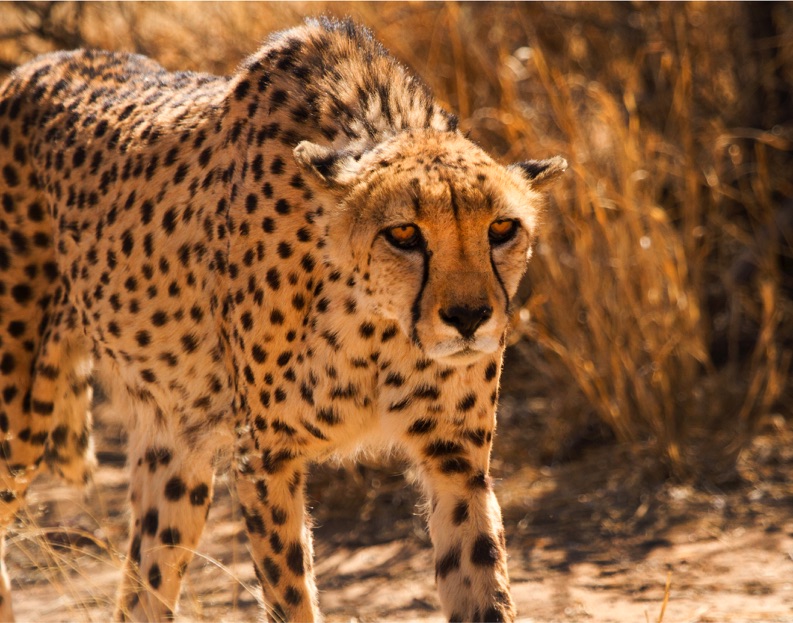
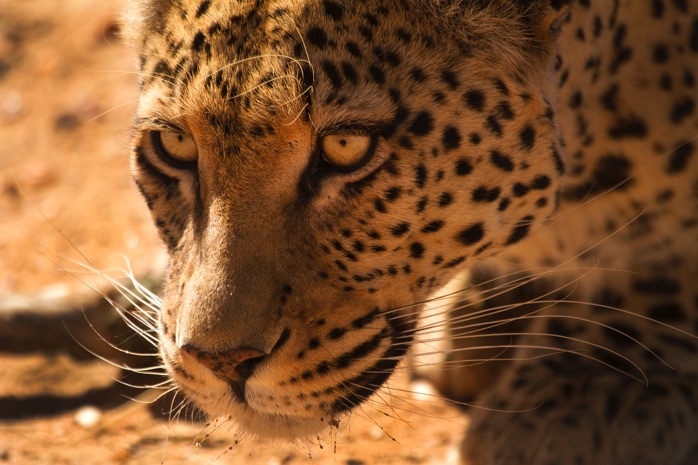
Naan ku se Conservancy
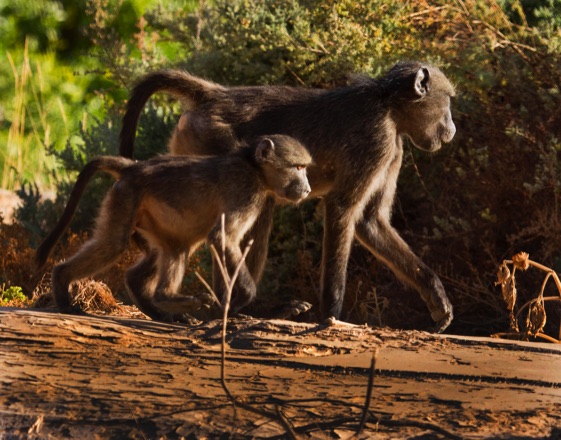
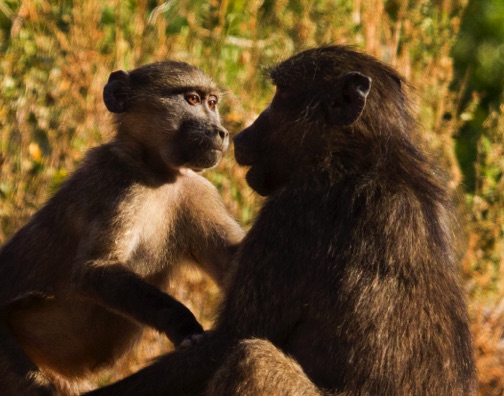
Chacma Baboons
(Papio ursinus)
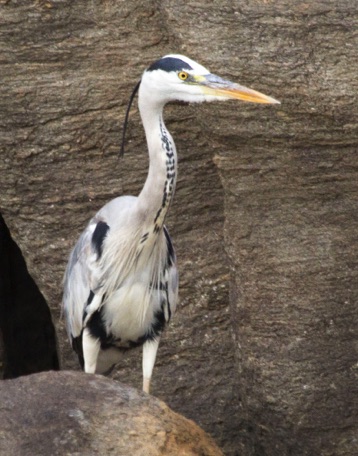
Grey Heron
(Ardea cinera)
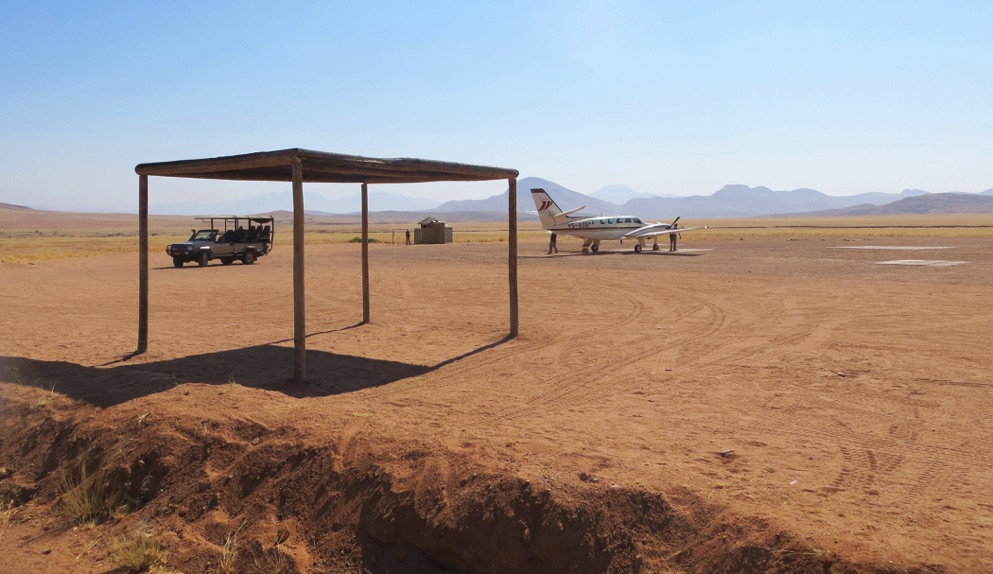
Namibia is a vast country with few paved roads. Driving you get what's referred to as the "African Massage". Flights between camps saved days of driving. As you can see the first class lounge is unoccupied.
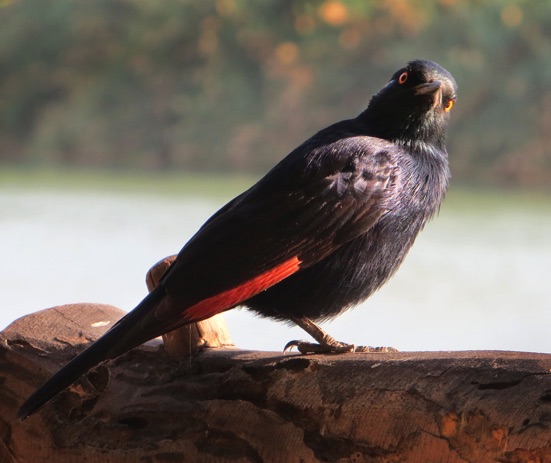
Red-winged Starling (Onychognathus morio)
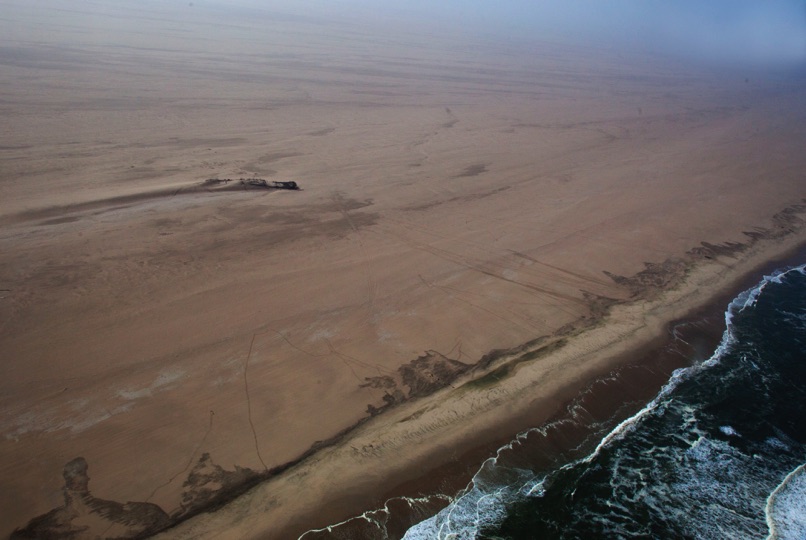
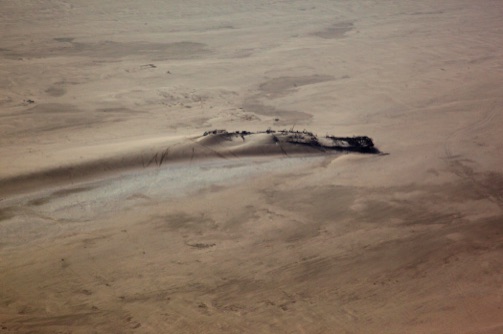
The Skeleton Coast of Namibia
The name originally refered to the whale and seal bones piled on the sands from the whaling industry.
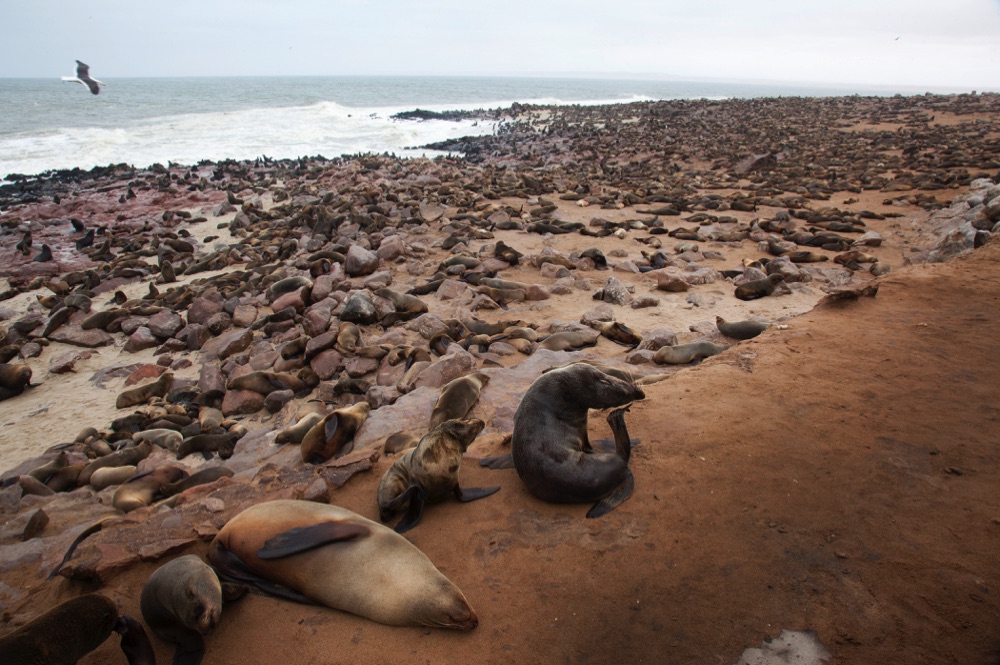
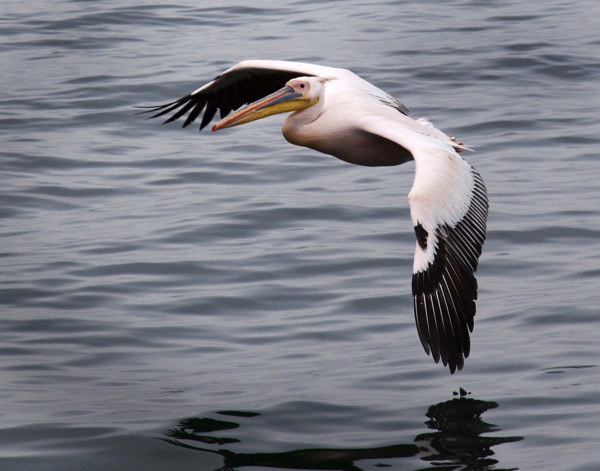
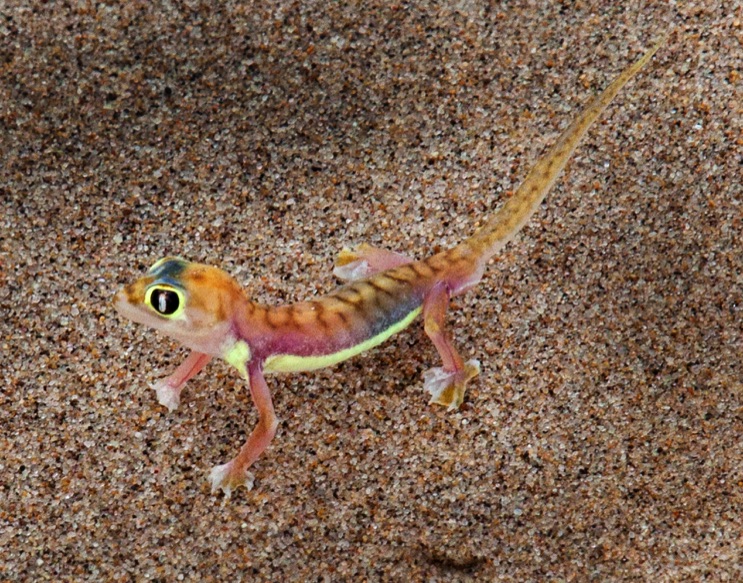
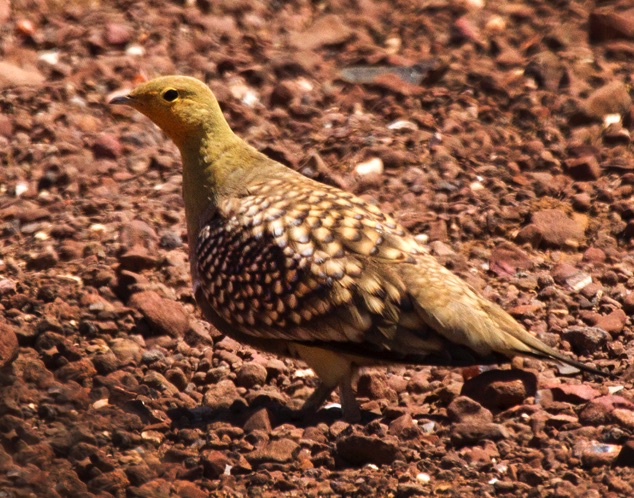
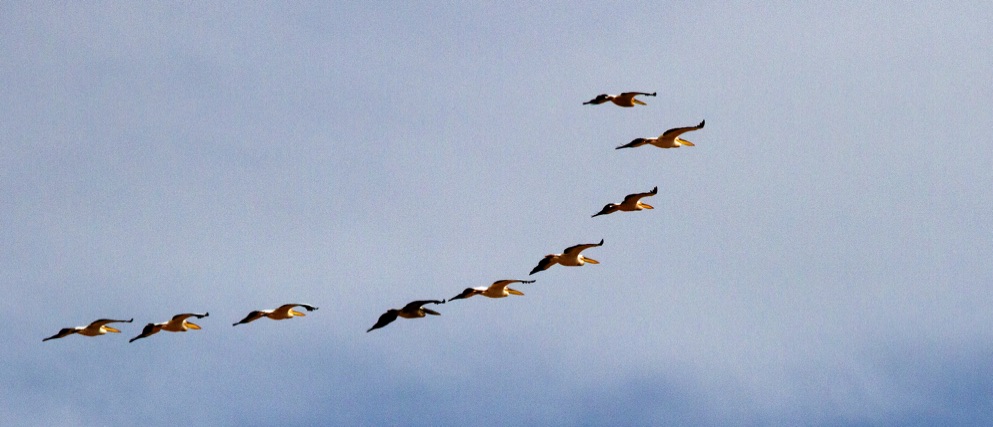
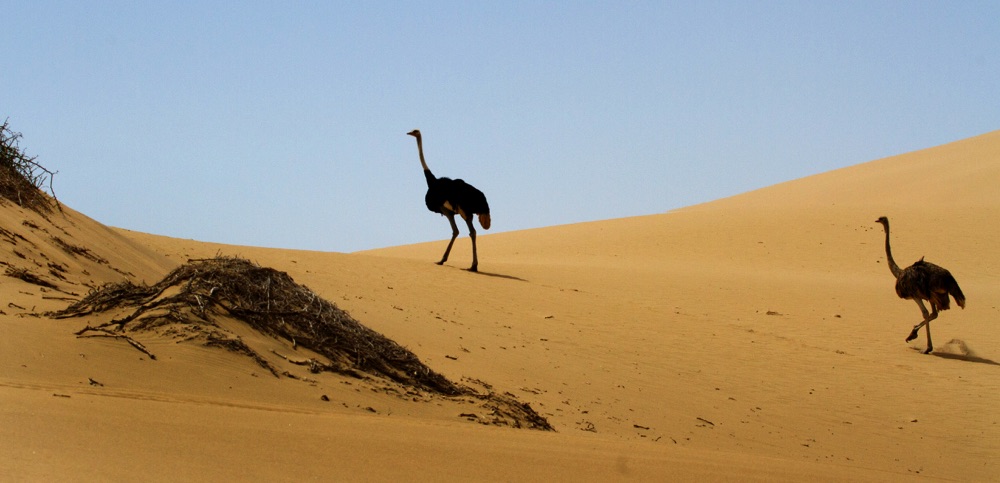
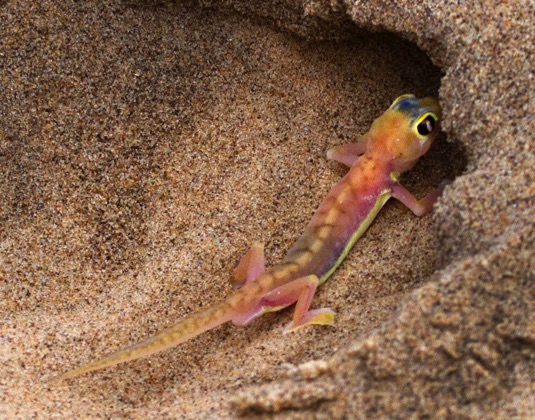
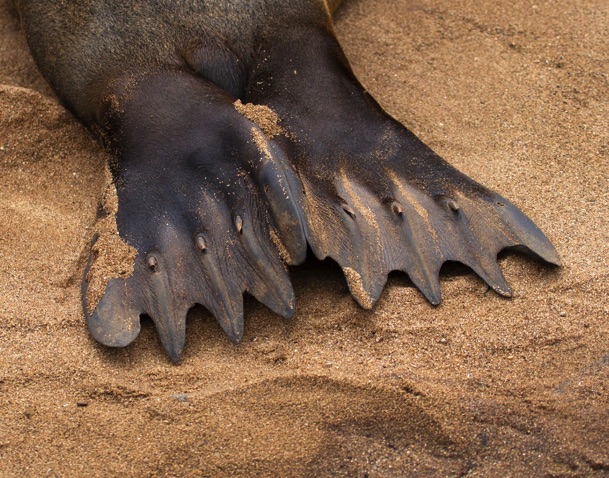
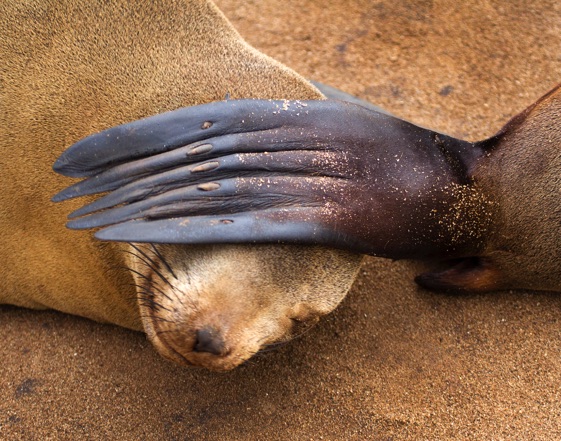
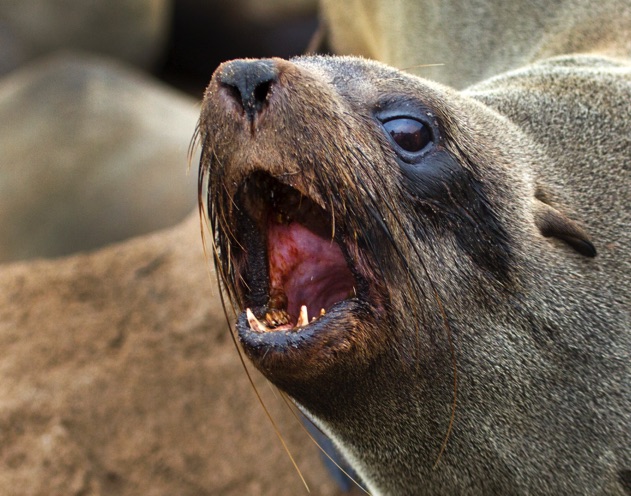
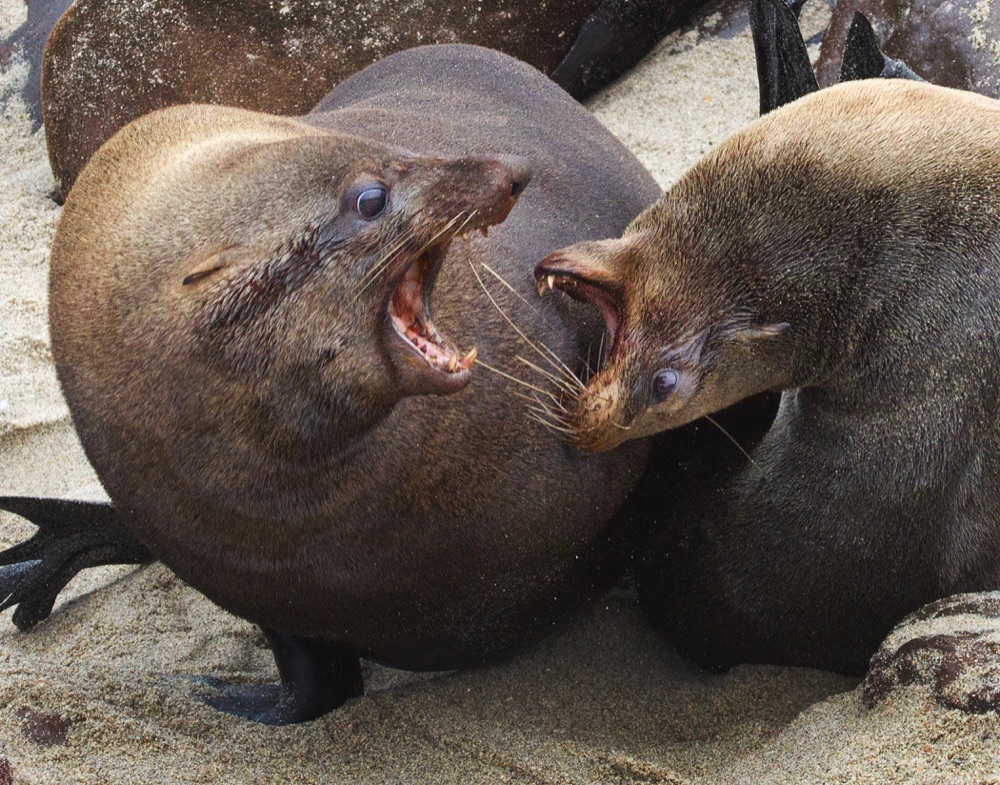
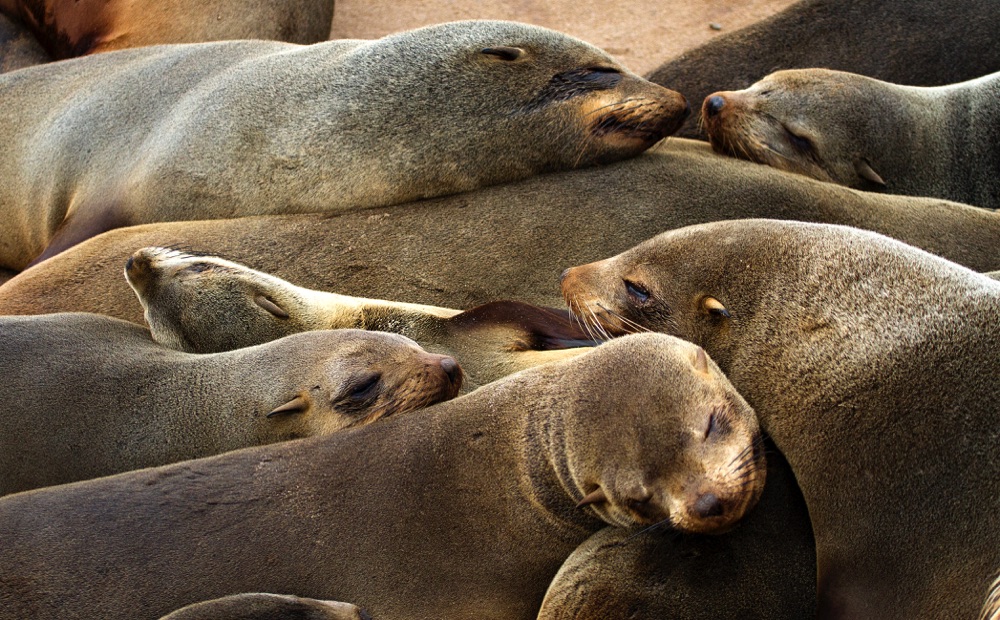
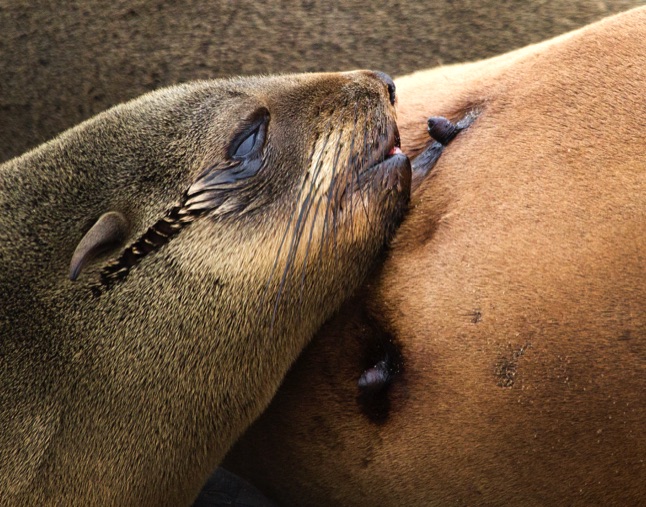
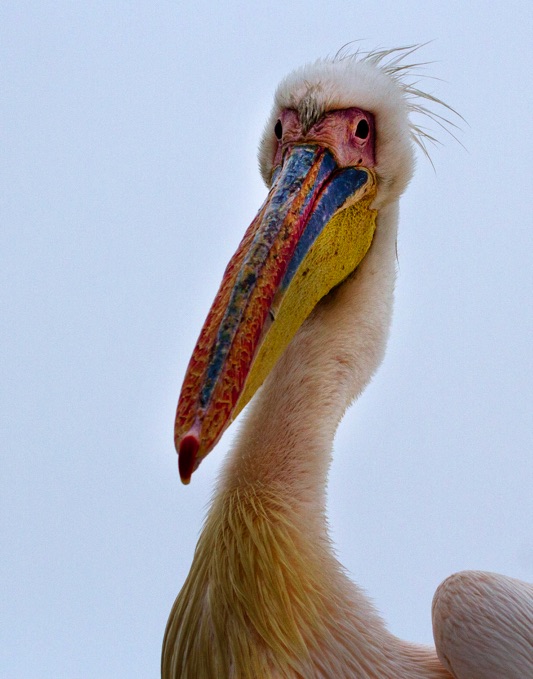
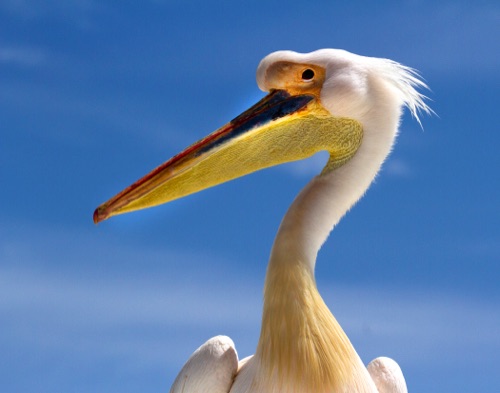
Namaqua Sand Grouse
(Pterocles namaqua)
The male can store water in its absorbent breast feathers and then fly up to 25 miles back to the nest with the water for the female and chicks.
Cape Fur Seals
(Arctocephalus pusillus)
Males can get to be almost 8 feet long
and weigh over 600 pounds
Shipwreck of Eduard Bohlen.
Ran aground in heavy fog and wecked in 1909, blowing sands from the dunes have extended the beach over the hundred years.
Offshore rocks and fog has led to over 1000 ship wrecks on the coast
The fur seal colony at Cape Cross is the largest breeding colony of these seals on the planet, with a population at times of over 200,000.
The unpleasant odor and noise is overwhelming..to some!!
Pennipeds like the fur seals, true seals, elephant seals,and walrus are thigmotactic. They tend to pile up on top of each other.
Palmato Webfooted Gecko
(Palmatogecko rangei)
They have an almost translucent skin and must avoid the sun, spending the day buried in the sand. Comes out at night to feed on crickets, spiders, and grasshoppers.
Pups are usually weaned by 4 to 6 months old.The mom will forage at sea for up to a week and return to feed her pup.
Returning females give off loud calls, the pup returns call.
Gets very noisy when there are thousands calling.
Great White Pelican (Pelecanus onocrotalus)
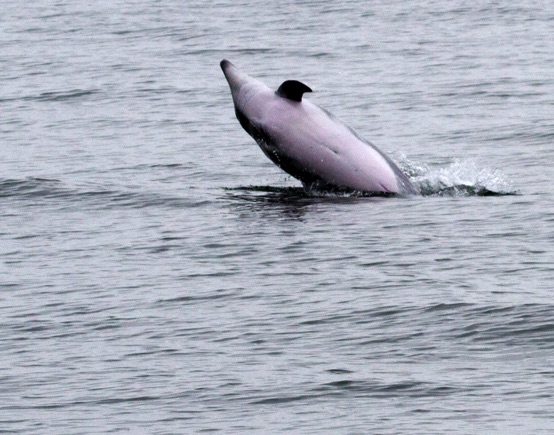
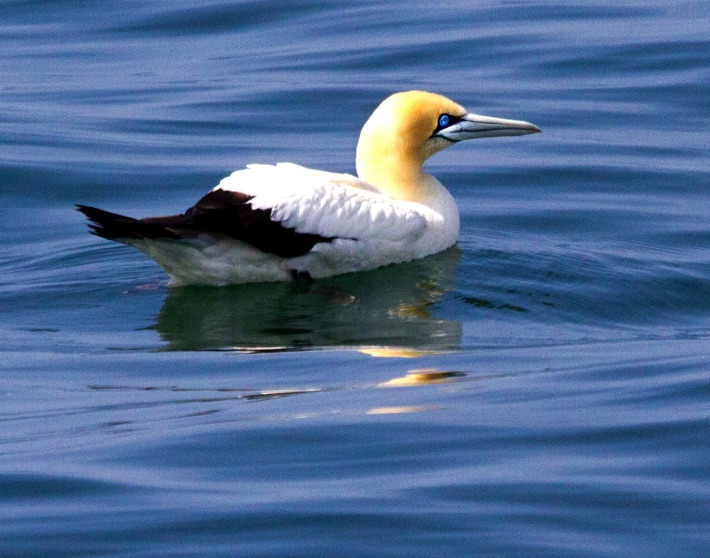
Bottle-nosed Dolphins
(Tursiops truncates)
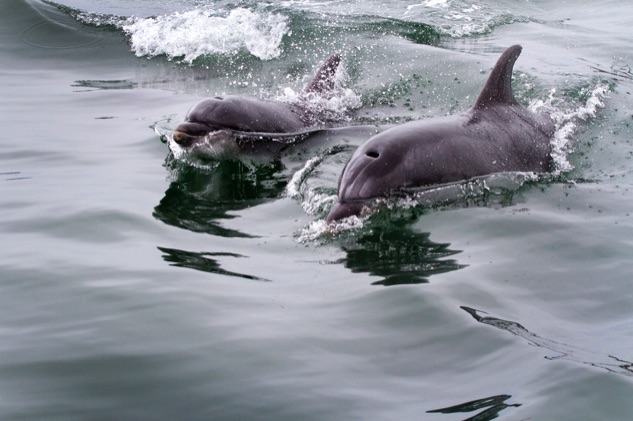
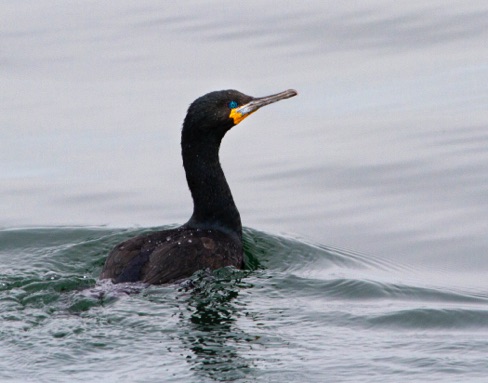
Cape Commorant
(Phalacrocorax capensis)
Cape Ganet
(Morus capensis)
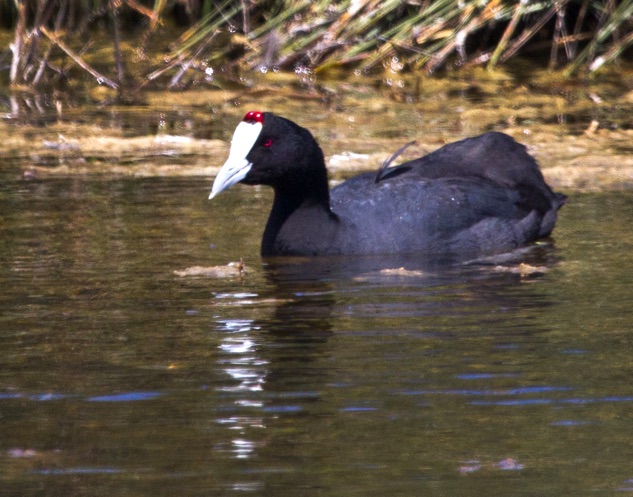
Red-knobbed Coot
(Fulica cristata)
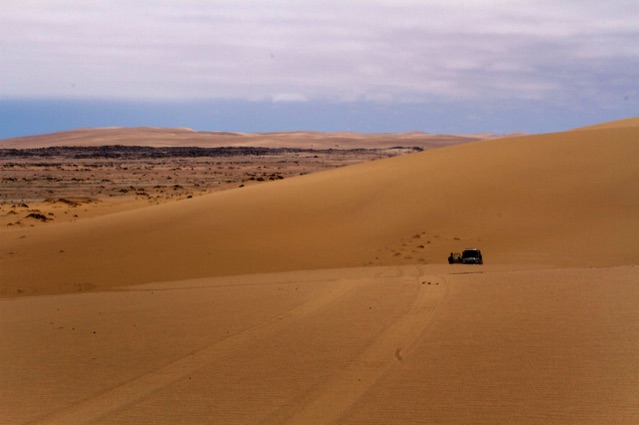
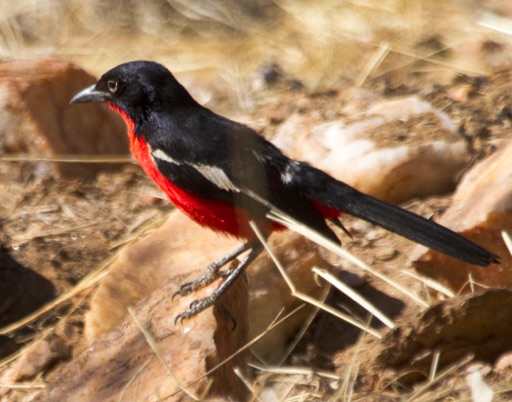
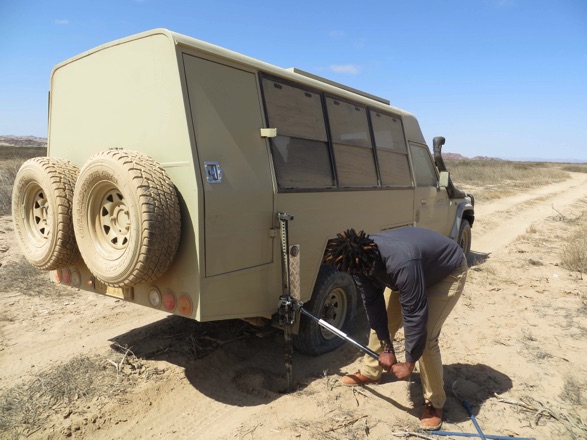
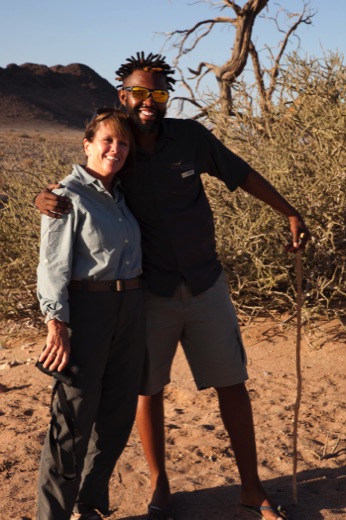
Crimson-breasted Shrike
(Laniarius atrococcineus)
Our guide for almost half our trip was Alpha, a gentleman and a scholar. We had a great time with him.
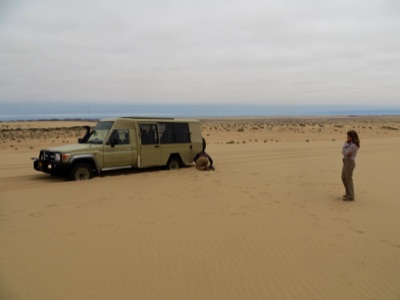
Part of the adventure was getting stuck in the sand in the middle of a very large desert.
And later getting a flat tire,
didn't slow us down long.
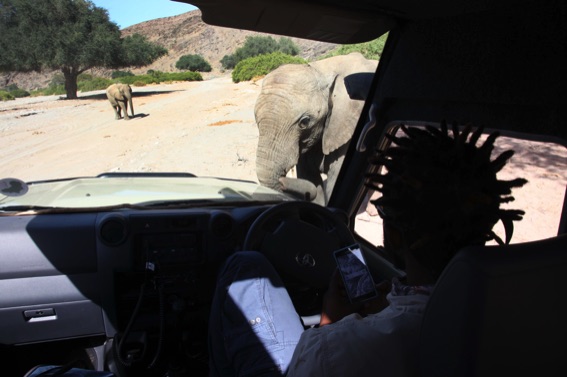
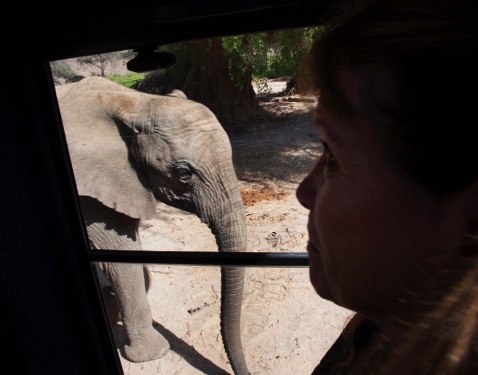
A young ele enjoyed scratching his trunk on the truck, took a close look at Cheryl.
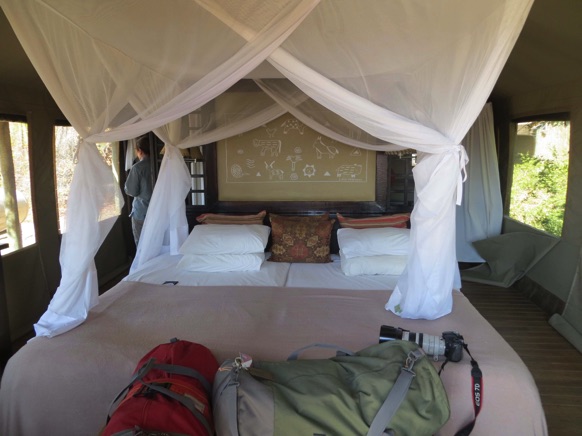
The Wilderness Safari camps were very comfortable. Seven camps visited. We certainly weren't roughing it
this time in Africa
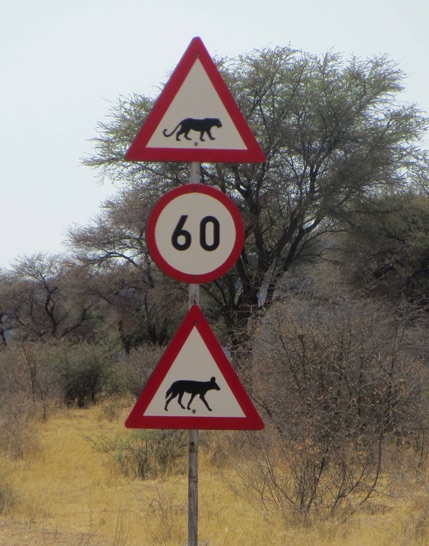
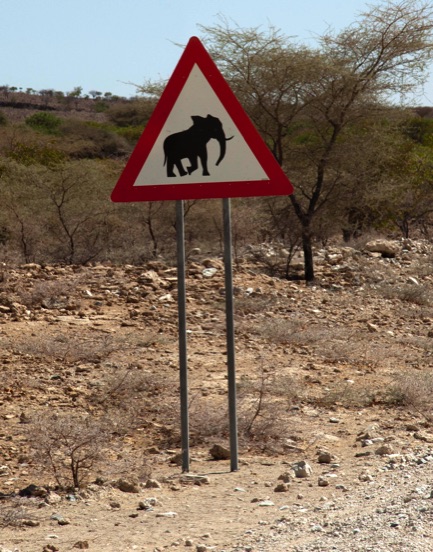
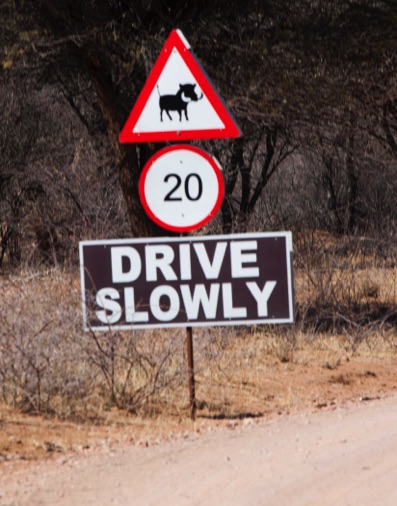
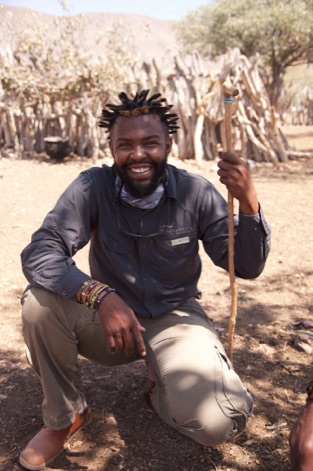
Road signs we don't see
often at home.
Rhino Desert Camp
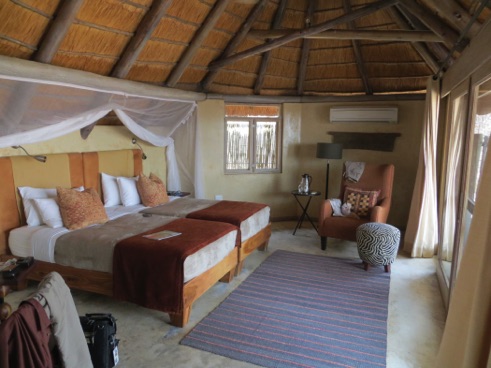
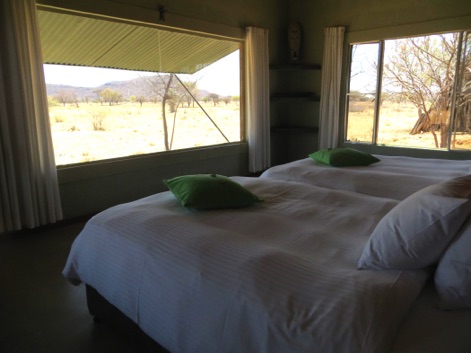
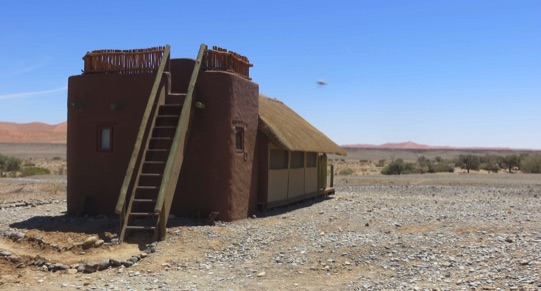
Okonjima Plains Camp
Ongava Lodge
Kulala Desert Lodge
(You can sleep on the roof if you desire)
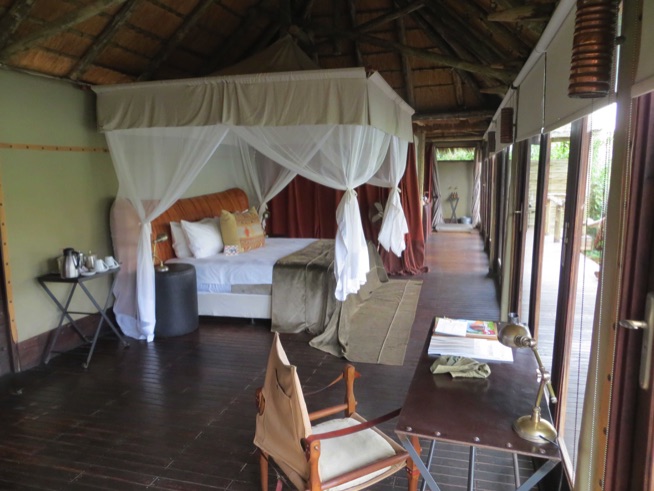
Serra Cafema, Namib Desert Camp on the Kunene River
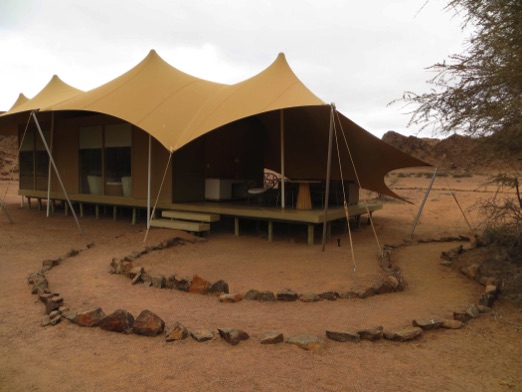
Hoanib Skeleton Coast Camp
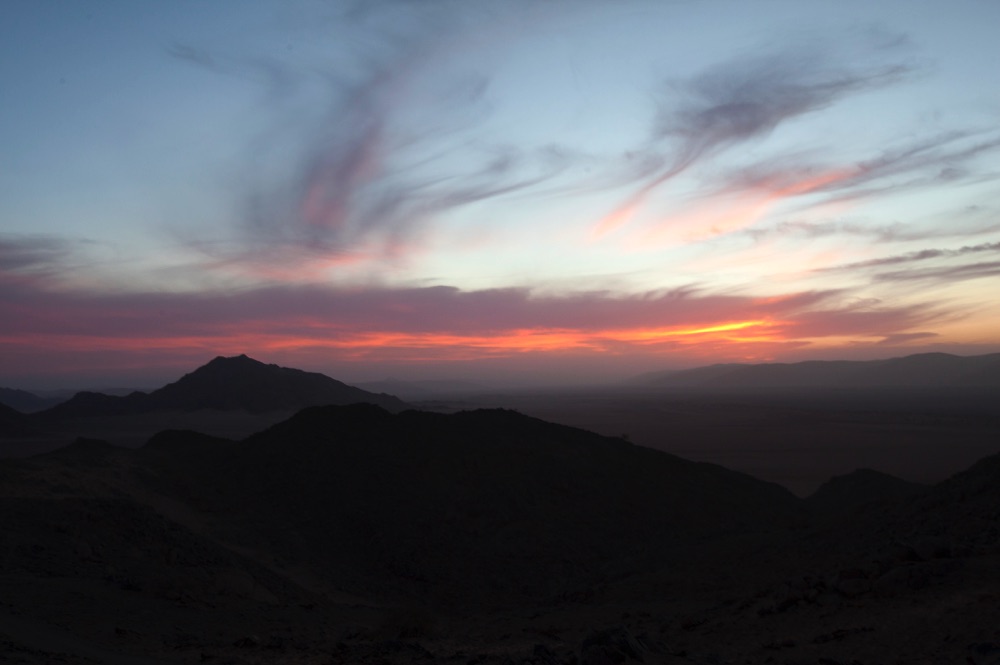
Namibia with its unique desert landscape was a completely different experience from other African countries we visited,
but as always, great wildlife sightings, great people.
